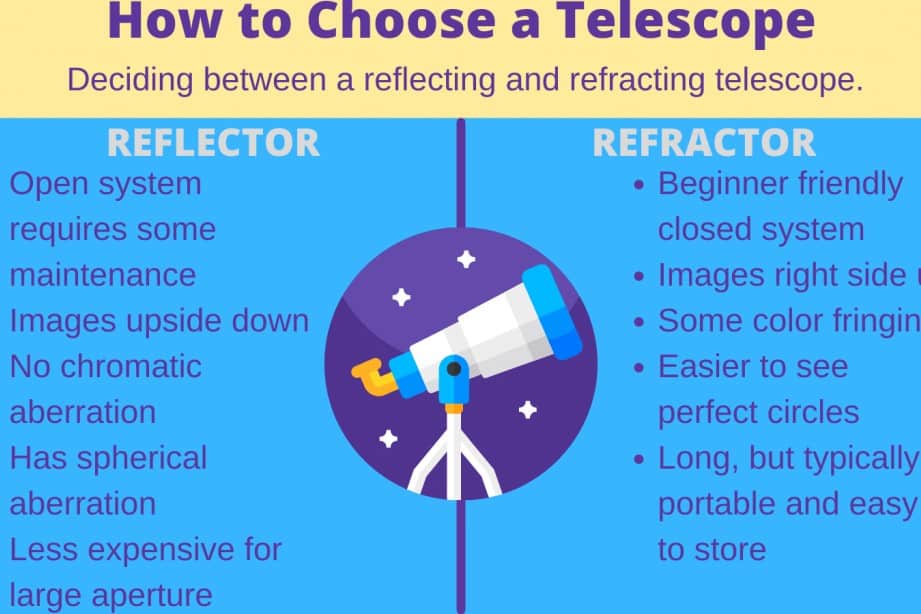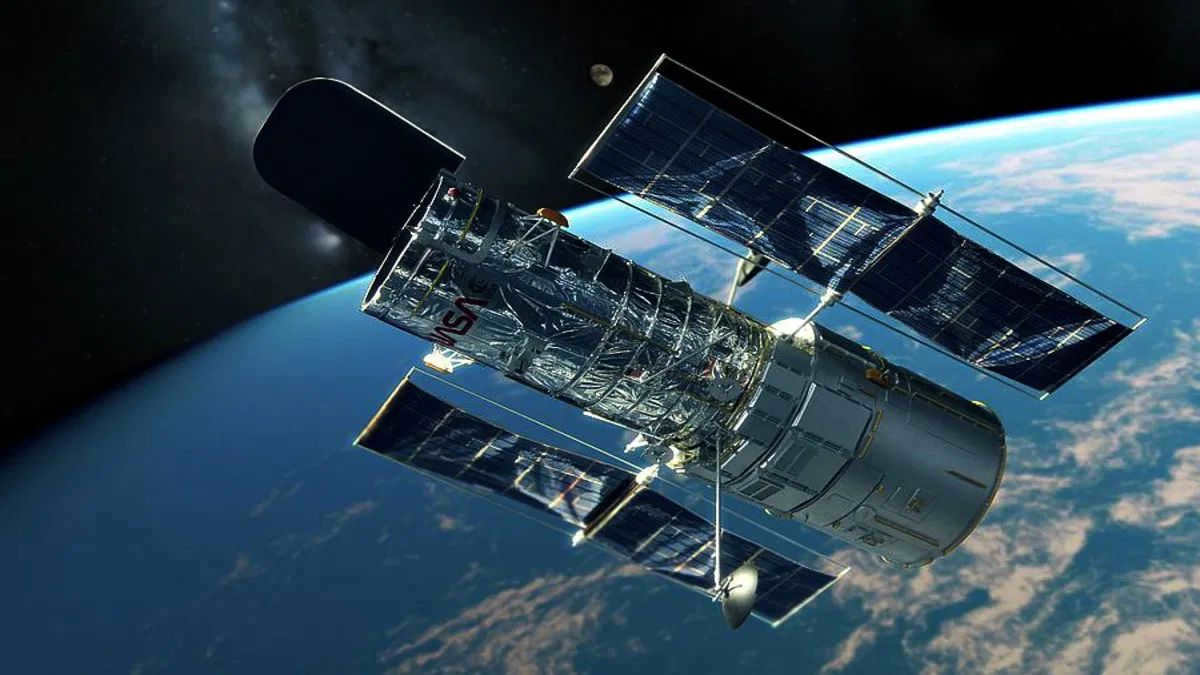
A telescope is essentially a device that enables the observation and study of celestial objects across a range of electromagnetic frequencies, spanning from gamma rays to low-frequency radio waves, including visible light. Telescopes can be classified into various types based on the wavelength and frequency of the electromagnetic radiation they detect. However, before we delve into this topic, let’s take a brief look at the history of telescopes.
The earliest recorded instance of a telescope in history dates back to the early 1600s in the Netherlands and is credited to the Dutch eyeglass manufacturer John Lippersgei. However, the term “telescope” was not coined until 1611 by the Greek mathematician Ioannis Dimisianos.
As early as 1610, the Italian polymath Galileo Galilei had already created his own enhanced edition of the telescope, which he subsequently utilized to make the groundbreaking discovery of the four Galilean satellites. Subsequently, in the late 1660s, Issac Newton devised the world’s initial reflector telescope, which is presently recognized as a Newtonian reflector.
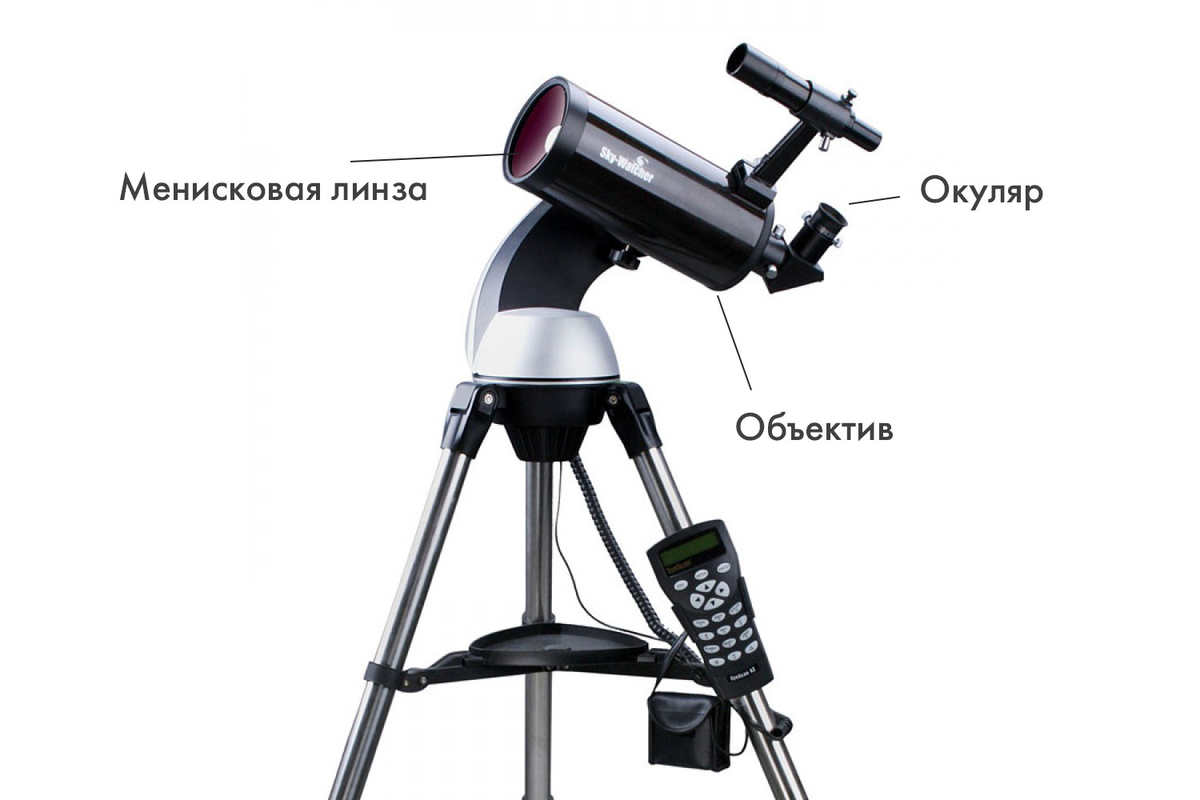
Optical telescopes, which operated within the visible spectrum of light, were the only type of telescopes used for about three hundred years. However, their capabilities were limited due to the restricted amount of information they could gather. It wasn’t until the mid-1900s that telescopes capable of detecting various electromagnetic wavelengths were developed.
It’s worth noting that not all telescopes are situated on the Earth’s surface. Some advanced telescopes are actually located in space, orbiting around our planet. These space telescopes are able to collect light with wavelengths that would otherwise be partially or completely blocked by Earth’s atmosphere.
1. Optical Telescopes
Optical telescopes are instruments that gather light in the visible range of the electromagnetic spectrum, which is visible to the naked eye. These telescopes are the oldest and most widely used in the world. The main advantage of optical telescopes is their ability to enhance luminosity, far surpassing what the human eye can perceive.
There are three main types of optical telescopes: refractor, reflector, and catadioptric. Each design has its own advantages and disadvantages, making them suitable for different applications in astronomy.
Telescopes with refractor optics
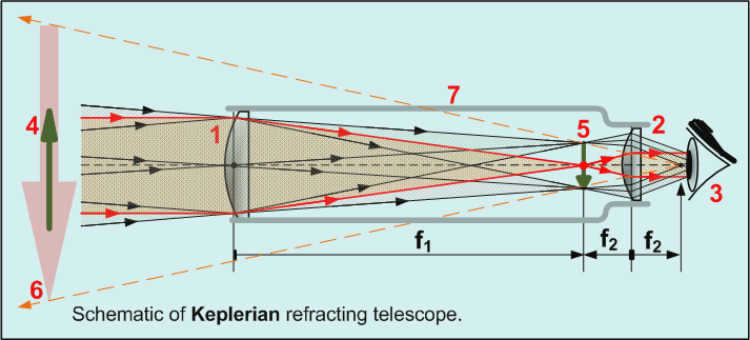
Optical telescopes known as refractive or dioptric telescopes use lenses instead of mirrors to produce an image. Each refractor is equipped with an eyepiece, which enables the telescope to capture more light than the human eye can perceive on its own.
Refracting telescopes can be classified into four different types based on their design – Galilean Telescope, Kepler Telescope, Achromatic Refractor, and Apochromatic Refractor.
While there are currently only a few refracting telescopes of research-grade in existence, they were once incredibly popular. The advancement of lens technology in the late 19th century established refracting telescopes as the standard for astronomical observation.
A reflector telescope, also known as a reflecting telescope, creates an image by utilizing a single mirror or, in certain cases, a group of mirrors. Isaac Newton developed the world’s first operational reflecting telescope in 1668 as an alternative to “uncorrected” refraction.
While they are still unable to generate a “flawless” image, reflectors are utilized in nearly all other scientific telescopes due to their physical advantages.
Similar to refractors, reflecting telescopes can be categorized into three main types based on their design – the Gregorian, Newtonian, and Cassegrain types. Additionally, there are various subtypes and specialized variations.
Catadioptric telescopes
Catadioptric telescopes, a lesser-known type of optical telescopes, offer a unique hybrid optical system by combining elements of reflecting and refracting telescopes. This innovative design is not only used in vehicle headlights but also finds application in certain types of telescopes and astronomical cameras.
Among the advantages of catadioptric telescopes is their superior error correction ability, thanks to their wider field of view. Additionally, these telescopes are lighter and more easily manufactured than other types. Notable examples of catadioptric telescopes include the Argunov-Cassegrain telescope, the Maksutov telescope, and the Schmidt camera.
2. Radio telescopes
Radio telescopes, also known as radio dishes, are astronomical instruments used to detect and collect radio waves from space. These telescopes are specifically designed to observe and study objects and phenomena that emit radio waves, such as stars, galaxies, and even pulsars.
One of the main advantages of radio telescopes is their ability to observe objects that are not visible to optical telescopes. This is because radio waves can penetrate through dust, gas, and other obstacles that can block or distort visible light. By collecting and analyzing radio waves, scientists can gain valuable insights into the composition, structure, and behavior of celestial objects.
Radio telescopes consist of a large dish, known as the reflector, which acts as a collecting antenna. The reflector is usually made of metal and has a parabolic shape. It focuses incoming radio waves onto a smaller secondary mirror or feedhorn, which then directs the waves to a receiver.
The receiver amplifies the weak radio signals and converts them into electrical signals that can be analyzed and processed by computers. This allows scientists to study the frequency, intensity, and other properties of the radio waves, which can provide important information about the source of the waves and its characteristics.
Radio telescopes are often used in conjunction with other telescopes and instruments, such as optical telescopes and spectrometers, to obtain a more complete picture of celestial objects. By combining data from different instruments, scientists can study the same object at different wavelengths and gather a wealth of information about its properties and behavior.
In conclusion, radio telescopes play a crucial role in modern astronomy by allowing scientists to study and understand the universe in a unique way. Their ability to detect and collect radio waves provides valuable insights into the composition, structure, and behavior of celestial objects, helping us unravel the mysteries of the cosmos.
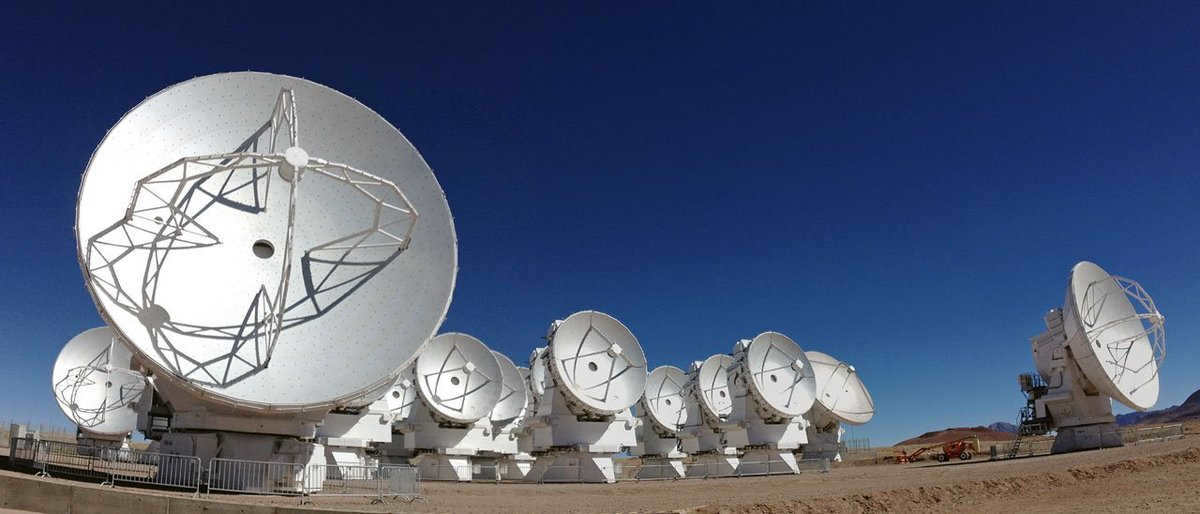
Astronomical objects are analyzed at radio frequencies by radio telescopes. These telescopes are able to detect signals from distant objects at radio wavelengths. The antenna, also known as a parabolic antenna, is a crucial component of a radio telescope.
Due to the weakness of the radio signals received from most astronomical bodies, large antennas are required by radio telescopes in order to collect enough data for research purposes. In some cases, multiple radio telescopes are electronically linked together, which significantly expands their search area through radio interferometry.
Since radio frequencies are capable of penetrating the Earth’s atmosphere, there is no necessity for space radio telescopes. However, they can potentially assist terrestrial telescopes.
There are several frequency ranges currently utilized by radio telescopes, such as the Neutral Hydrogen Radioline, 23 GHz, 33 GHz, 41 GHz, 61 GHz, 94 GHz, 1406 MHz, and 430 MHz.
Many countries have prohibited the commercial use of these frequencies in order to prioritize radio astronomy tasks.
The practice of radio interferometry
Radio interferometry involves combining radio signals captured by multiple antennas spread out over a large area, resulting in enhanced overall resolution. This technique has been in use since as early as 1946.
3. Solar telescopes
Solar telescopes, previously referred to as photogeliographs, have been created with the specific purpose of observing the sun within the near-infrared and ultraviolet wavelengths. Unlike other varieties of telescopes, solar telescopes are limited to operating exclusively during daylight hours and are commonly situated atop tall white structures.
The McMath-Pierce Solar Telescope, situated in Arizona (USA), stands as the largest telescope within this category. The Dutch Open Telescope and the Daniel K. Inouye Solar Telescope serve as excellent examples of solar telescopes.
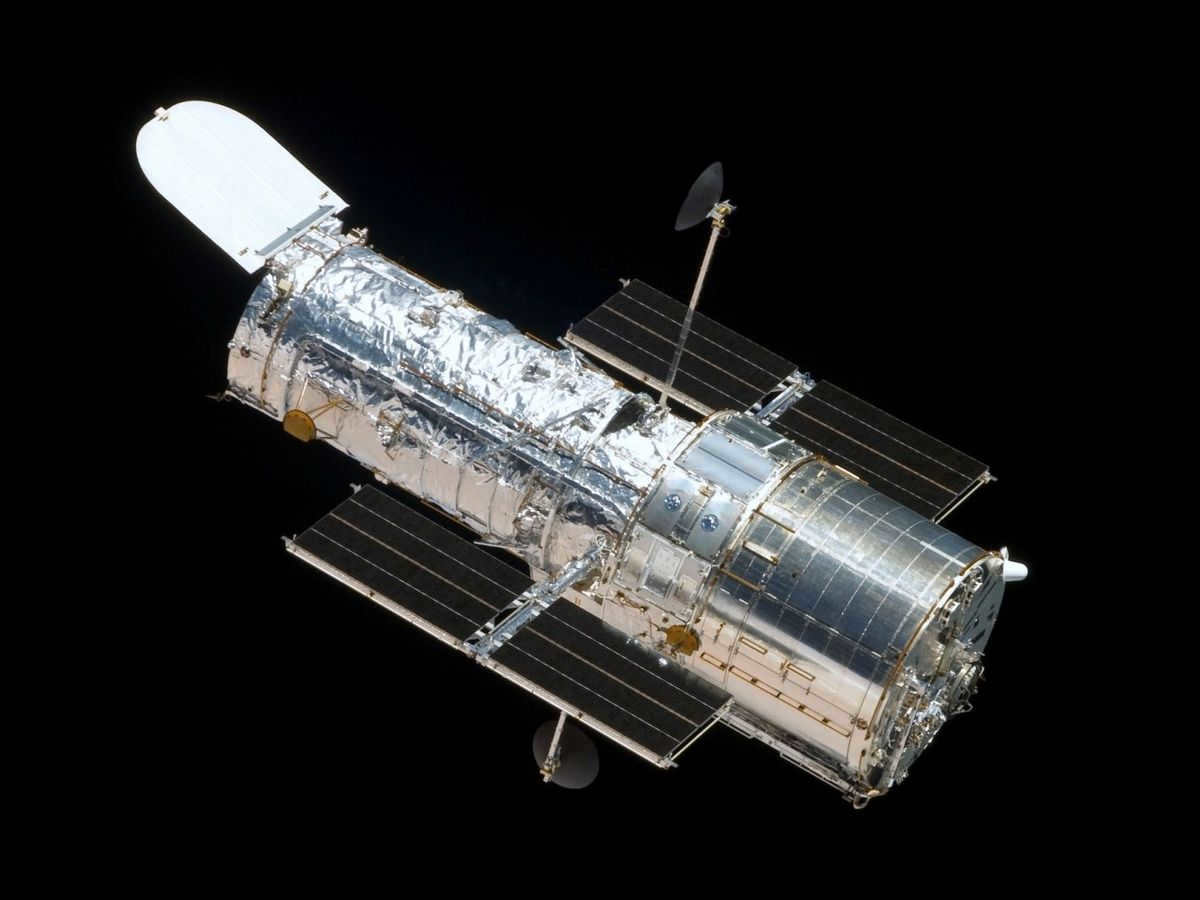
In the early 1920s, a group of physicists including Hermann Oberth, Konstantin Tsiolkovsky, and Robert Goddard, who are considered the founding fathers of astronautics, contemplated the concept of a space telescope that could be launched into Earth’s orbit using a rocket. This marked the inception of a new breed of telescopes.
Fast forward to 1946, when theoretical astrophysicist Lyman Spitzer from Princeton University expounded on the benefits of such a device and how it could eliminate the atmospheric turbulence experienced during telescopic observations on Earth.
A space telescope is a scientific instrument that studies celestial objects and conducts research beyond the confines of Earth’s atmosphere.
Space telescopes provide more precise observations compared to their ground-based counterparts because they are not affected by atmospheric turbulence and radiation distortion. Below, we have summarized the various types of space telescopes.
4- Infrared Telescopes
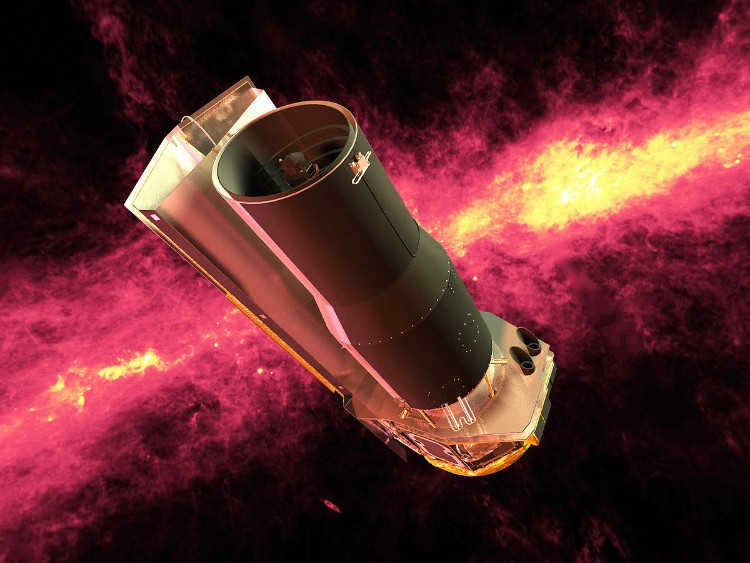
Infrared astronomy is a significant field of study in modern astrophysics. Due to the Earth’s atmosphere blocking most infrared radiation (only a small wavelength can pass through), many infrared telescopes are situated in outer space.
Infrared telescopes are capable of detecting faraway celestial objects in dusty regions of the universe. They also play a crucial role in researching the early stages of the cosmos. However, observing at the infrared frequency is quite challenging compared to other wavelengths because any hot object emits infrared radiation.
To tackle this issue, infrared telescopes are equipped with specialized cameras that are permanently maintained at cryogenic temperatures (below -150 °C) and connected to solid-state detectors.
The Spitzer Space Telescope, an iconic creation of NASA, stands as a monumental achievement in the realm of space-based infrared telescopes.
5. Telescopes for Ultraviolet Observation
Our planet’s atmosphere serves as a protective shield, preventing harmful radiation, including ultraviolet rays, from penetrating the Earth’s surface. Consequently, the only way to study ultraviolet radiation is by observing it from space.
Ultraviolet astronomy provides researchers with a unique opportunity to closely examine distant stars and galaxies. Since most stars emit radiation in the near-infrared or visible wavelength range, they appear relatively insignificant when viewed in ultraviolet light. Only stars that are either in an early or late stage of evolution, and thus significantly hotter, will be visible. In reality, every celestial body that possesses a high temperature emits ultraviolet radiation.
Listed below are some of the well-known telescopes designed specifically for observing ultraviolet light in space:
Two highly notable examples of ultraviolet telescopes are NASA’s Far Ultraviolet Spectroscopic Explorer, also known as FUSE, and the Swift Gamma-Ray Burst Emission.

6. X-ray telescopes
X-ray telescopes are specifically designed to observe distant objects using X-ray frequencies. Due to the Earth’s atmosphere blocking X-ray waves, these telescopes can only be utilized in space.
The primary component of an X-ray telescope consists of mirrors, either focusing or collimating, which gather the radiation and direct it towards specialized detectors. X-ray telescopes equipped with focusing mirrors require a significant focal length, meaning the mirrors must be positioned several meters away from the detectors.
Notable space-based X-ray telescopes
Since the 1960s, over fifty X-ray telescopes have been sent into space. The initial recognized X-ray satellite, UHURU (Uhuru), conducted comprehensive research on Swan X-1 (an X-ray source located in the Swan constellation) and other well-known X-ray sources. NASA’s Chandra X-ray Observatory, which was launched in 1999, marked a significant advancement in X-ray astronomy.
Chandra possesses 100 times greater sensitivity to faint X-rays compared to any previous telescope, thanks to the improved angular resolution of its mirrors. Other notable X-ray observatories include NuSTAR (Nuclear Spectroscopic Telescope Array) and the Japanese Hitomi satellite.
7. Microwave telescopes
Microwave telescopes are instruments that are used to observe and study celestial objects using microwaves. These telescopes are designed to detect and capture the faint signals emitted by objects in the microwave range of the electromagnetic spectrum.
Microwaves are a form of electromagnetic radiation with wavelengths that fall between radio waves and infrared light. They are able to penetrate through clouds, dust, and other obstacles that can obstruct other forms of light, making them useful for studying objects that are otherwise difficult to observe.
Microwave telescopes work by collecting and focusing microwave radiation from the sky onto a detector. The detector then measures the intensity of the radiation and converts it into an electrical signal that can be analyzed and interpreted by scientists.
One example of a microwave telescope is the Atacama Large Millimeter/submillimeter Array (ALMA) located in Chile. ALMA consists of a network of 66 individual telescopes that work together to capture and analyze microwave radiation from space. It is the largest and most powerful telescope of its kind and has been instrumental in making important discoveries about the formation of stars and galaxies.
In addition to studying celestial objects, microwave telescopes also have practical applications in other fields, such as telecommunications and weather forecasting. They are used to transmit and receive microwave signals for communication purposes and to gather data about the Earth’s atmosphere and weather patterns.
Overall, microwave telescopes play a crucial role in expanding our knowledge of the universe and have revolutionized our understanding of celestial objects and phenomena. Their unique ability to detect and capture microwave radiation has opened up new avenues of exploration and has allowed scientists to make groundbreaking discoveries in the field of astronomy.
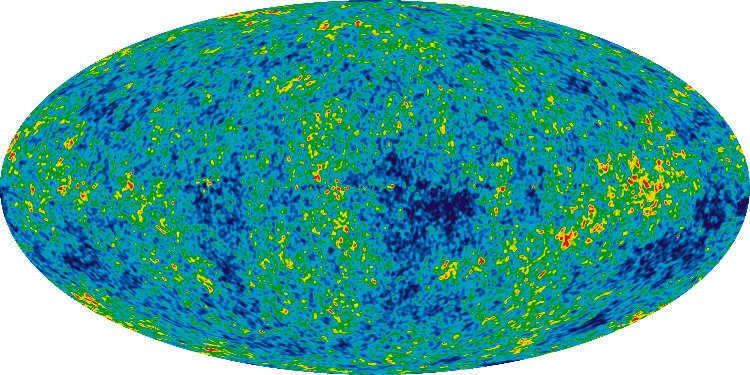
Similar to X-rays and ultraviolet radiation, the majority of microwave radiation is absorbed by the Earth’s atmosphere. As a result, astronomers must rely on space-based microwave observatories and telescopes in order to study cosmic microwaves.
Cosmic microwaves, also known as cosmic background radiation, are the oldest form of electromagnetic radiation in the universe. They are the remnants of the Big Bang. While cosmic microwave telescopes are primarily used to study the cosmology of the early Universe, they are also capable of observing synchrotron radiation and other phenomena.
Some well-known cosmic microwave telescopes include
The Wilkinson Microwave Anisotropy Probe (WMAP) and the Planck satellite, both equipped with telescopes, are currently the only two space-based microwave telescopes in operation. The Cosmic Background Explorer (COBE), which was also a space-based microwave telescope, ceased operations in 1993.
8. Gamma-ray telescopes.
Gamma rays, the most dynamic form of electromagnetic radiation, have different energy levels. Low energy gamma rays (in the MeV range) are produced by solar flares, while high energy gamma rays (GeV) are only generated by extreme events outside our solar system, such as the superluminal explosion of a star. Therefore, gamma rays play a crucial role in various extragalactic studies.
However, detecting gamma rays is much more challenging compared to X-ray waves. Currently, there is no dedicated gamma-ray telescope in existence. Instead, astronomers rely on alternative methods to detect the presence of gamma rays in the sky, such as observing Cherenkov radiation.
Although gamma rays are often blocked by Earth’s atmosphere, they can still be observed from various ground-based observatories, including HESS, HAWC, and VERITAS.
List of gamma-ray telescopes
At present, there are only five operational space telescopes that are capable of observing gamma-ray frequencies. NASA’s Swift orbiting observatory, which was launched in 2004, is used to detect enigmatic gamma-ray bursts originating from different parts of the universe. Another NASA observatory, Fermi, has been specifically designed to study high-energy bursts emitted by pulsars and black holes.
While many space satellites focus on observing or listening to only one particular wavelength, there exist numerous telescopes that have the capability to collect information from multiple parts of the electromagnetic spectrum simultaneously. The Hubble Space Telescope serves as a prime illustration of such telescopes, as it is able to observe in the near infrared, visible, and ultraviolet spectra.
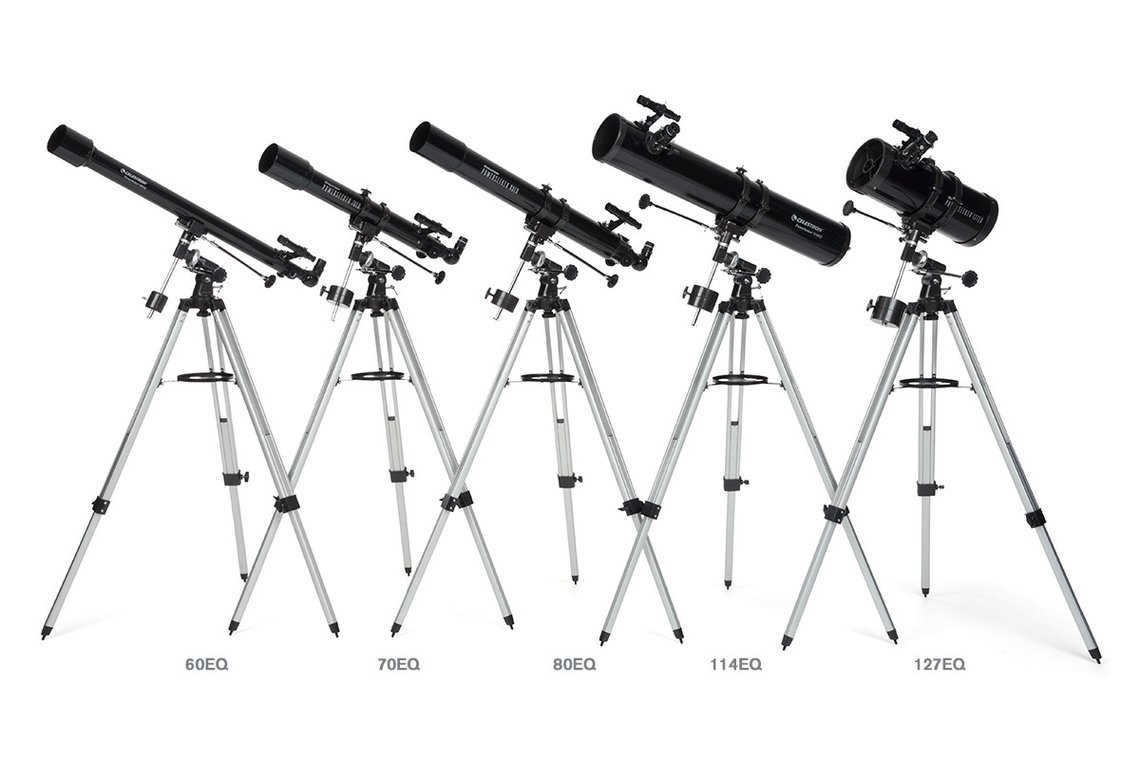
The fascination with stars and distant planets is an intriguing and captivating pursuit. An aspiring astronomer cannot imagine embarking on this journey without a star map and an astronomical calendar. However, the most critical tool for studying the heavens is a telescope – an optical instrument that amplifies the magnification of stars and enables a closer and more detailed examination of planets.
Selecting the appropriate telescope is no simple task; there are various models available for observing celestial bodies. It is crucial to find a telescope that suits the individual user and addresses their specific objectives. Expert recommendations and fundamental knowledge of astronomy are invaluable in making this decision.
Optical telescopes gather and concentrate light rays into a single location, thereby enhancing the brightness of celestial objects. Put simply, they amplify the quantity of light rays emitted by astronomical entities.
Based on the manner in which light is gathered and focused, telescopes can be classified into various optical systems. The choice of optical setup determines the telescope’s price and its primary function in observing specific objects.
Lenticular telescopes, also known as refractors
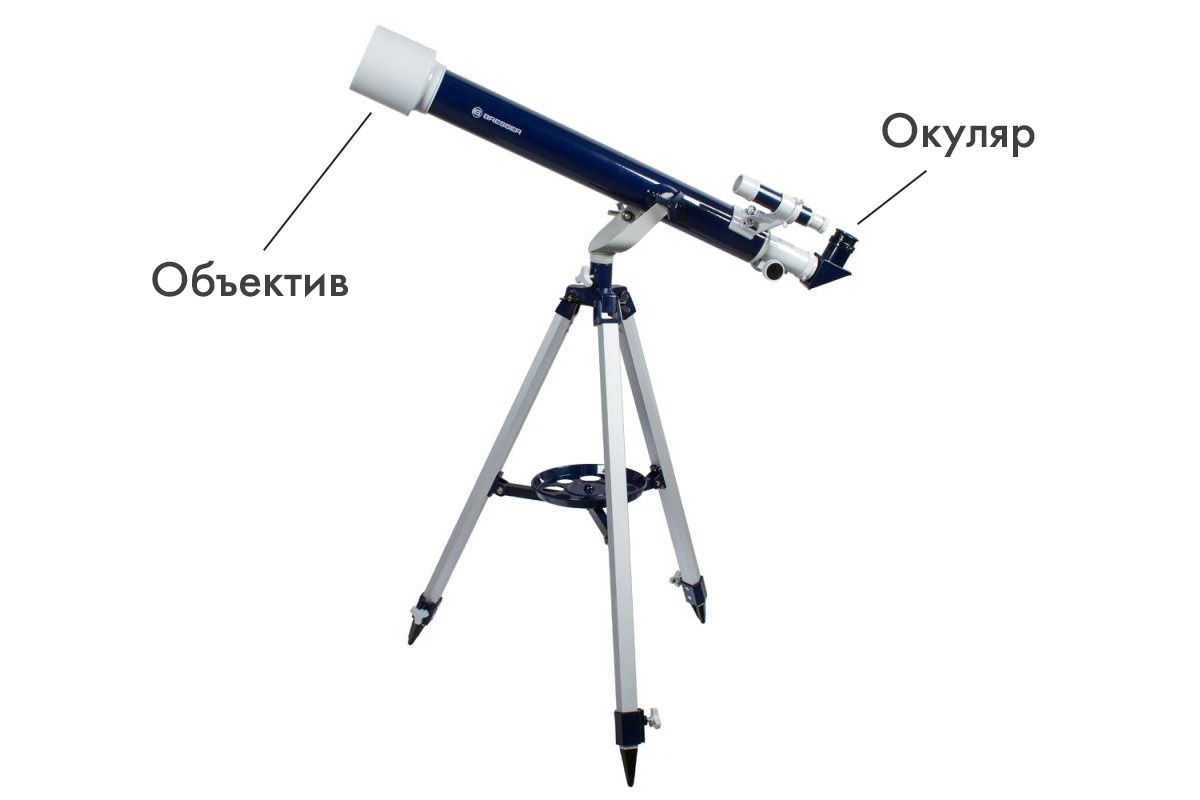
A basic refractor telescope on an azimuthal mount
This kind of telescope is considered one of the simplest types of instruments. The refractor works by bending light as it passes through lenses. In simple models, there are two lenses – one (the objective lens) focuses the light to a single point after it is bent, while the other lens acts as a regular eyepiece.
These models have the advantage of being user-friendly, making them ideal for beginners. They require no additional alignment, and the images are clear and bright even at lower magnifications. The body of these telescopes is enclosed, with the lens in front and the eyepiece at the back, providing protection against dust. However, there are a few drawbacks to consider. Telescopes with larger lenses tend to be more expensive (I’ll discuss this further below), and there may be some chromatic aberration when the focal length is reduced. Chromatic aberration refers to the distortion of colors at the edges of observed objects.
Lens telescopes are particularly well-suited for observing the planets in our solar system, the Moon, and objects on Earth.
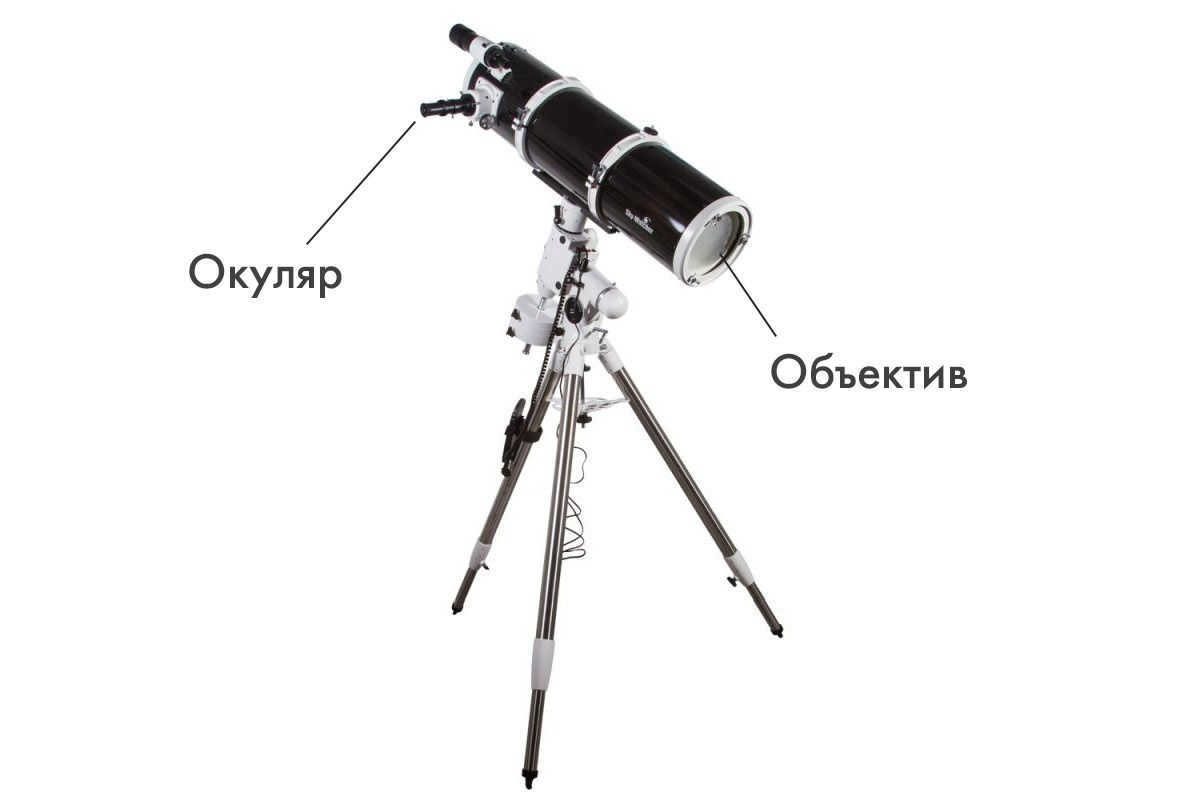
Reflector on an azimuth mount
A reflector telescope, also known as a mirror telescope, utilizes a concave mirror instead of lenses. This distinction sets it apart from its counterpart, the refractor telescope, as it operates on a different principle. In a reflector, the mirror is fixed at one end of the tube, with the eyepiece positioned on the side. While astronomers find both types of telescopes useful, reflectors are not ideal for transportation. The objective and eyepiece can easily shift during travel, requiring realignment to ensure proper functionality. For this reason, reflectors are best suited for a stationary home observatory.
If you compare the prices of a lenticular telescope and a reflector telescope, you will find that the latter comes with a larger lens, resulting in greater magnification.
One downside is that the design of a reflector telescope leaves it open, allowing dust to enter and settle on the main mirror, potentially degrading the image quality. However, manufacturers have made the lens easy to clean.
Reflector telescopes are ideal for observing celestial objects in deep space, such as stars, star clusters, nebulae, and galaxies. The image produced is exceptionally clear and vibrant.
Catadioptrics (mirror-lens telescopes)
A motorized GOTO tripod supports a telescope with a mirror-lens design.
A type of telescope that combines both reflection and refraction is known as a catadioptric or meniscus telescope. This instrument utilizes the properties of light bending and mirror reflection to create an image. The exterior of a mirror-lens telescope resembles a barrel shape. Some of the advantages of this type of telescope include its compact size and long focal length. It is particularly suitable for observing from balconies and rooftops. Additionally, the simple adjustment mechanism makes it appealing for beginner astronomers.
Catadioptrics offer the combined benefits of mirror and lens telescopes. However, these telescopes tend to be more expensive compared to other types.
Criteria for selecting a telescope
Choosing the right telescope can be a challenging task for beginners due to the wide variety of models available in the market, each with its own unique characteristics. To make an informed decision, it is recommended to consider several key criteria. Let’s examine each of them in detail.
Aperture and maximum magnification
The aperture, which refers to the diameter of the lens, is the most crucial factor to consider when selecting a telescope. It is commonly denoted by the letter D. The aperture size is typically indicated in the name of the telescope, usually appearing first after the model name. For instance, in the case of the Levenhuk Blitz 50 BASE telescope, the number 50 represents the aperture in millimeters.
The maximum practical magnification of a telescope is determined by multiplying the diameter of the main mirror (objective lens) in millimeters by 2. For instance, if the objective lens has a diameter of 50 mm, multiplying it by 2 gives us 100 – which is the maximum practical magnification (100x). The crucial aspect here is the “practical magnification”. By altering the eyepiece, it is possible to achieve a higher magnification, such as 200x in our case, but the image will become very blurry and dim. This phenomenon is similar to what happens when you use the zoom function on your phone camera – the more you zoom in, the more blurred the image becomes. The picture quality improves with higher zoom limits and aperture sizes.
Many stores disregard this aspect and advertise a magnification of 500-1000x for a telescope equipped with a 50mm lens. However, it is important not to be fooled by this marketing tactic, as with such a small lens diameter and high magnifications, you will not be able to see anything.
For urban settings, a telescope with a lens diameter of 50-60mm is quite suitable. Stargazing enthusiasts are advised to invest in a telescope with an aperture of 60mm or larger. Professionals, on the other hand, will greatly appreciate a device with a 90mm aperture.
Luminosity
The luminosity of a telescope is defined as the ratio of its aperture to its focal length. This characteristic plays a crucial role in determining the brightness of the resulting image. When selecting a telescope, luminosity is an equally significant factor to consider. A higher luminosity means that the lens will gather more light rays, resulting in shorter exposure times for capturing the frame. However, it’s important to note that while light-gathering telescopes offer numerous advantages, they are also susceptible to aberrations due to their design.
Focal length
The focal length is a measurement, expressed in millimeters, that refers to the distance between the main lens of a telescope and its focal point. It is represented by the letter f. This characteristic has an impact on the magnification and image quality of the telescope. A higher value of the focal length allows for greater magnification. Telescopes with a short focal length have a limited field of view and can suffer from chromatic aberration, particularly in the case of refracting telescopes. On the other hand, telescopes with a long focal length provide a clearer and more detailed view of celestial objects, without any optical distortion.
A mount is a support for a telescope, typically consisting of a tripod with legs that can be adjusted for height. There are various types of mounts, including desktop and full-size, but all can be categorized into the following types.
Azimuthal
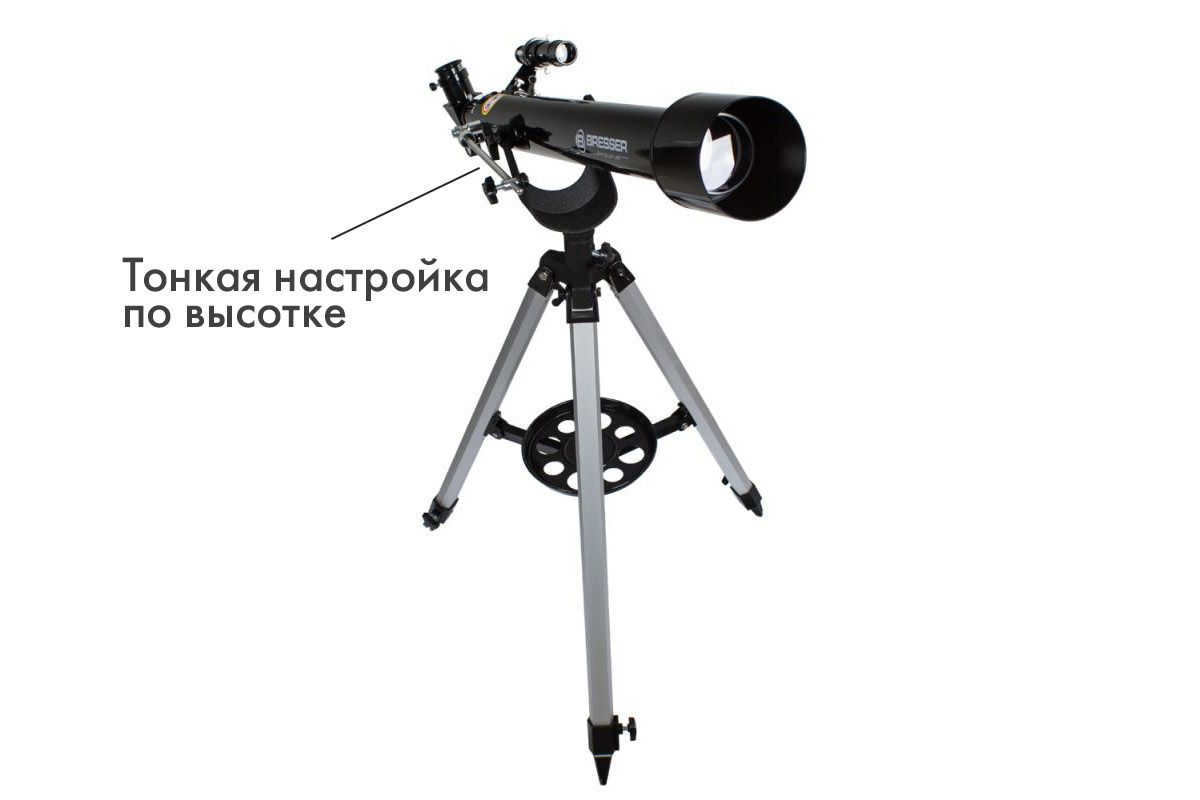
Azimuthal mount with precise vertical adjustment
The most basic model, which enables the movement of the instrument in various directions. The stand is commonly used with budget-friendly telescope models. This design is not suitable for capturing photos and videos.
As celestial bodies are constantly in motion due to the Earth’s rotation, the telescope needs to be continuously adjusted. With an azimuthal mount, this adjustment needs to be done simultaneously in two planes – vertically and horizontally. This can be inconvenient at high magnifications, but it is comfortable at low magnifications and when observing objects on Earth.
One type of azimuthal mount is the Dobsonian mount, which is commonly used for large reflector telescopes of the Newtonian system.
Equatorial
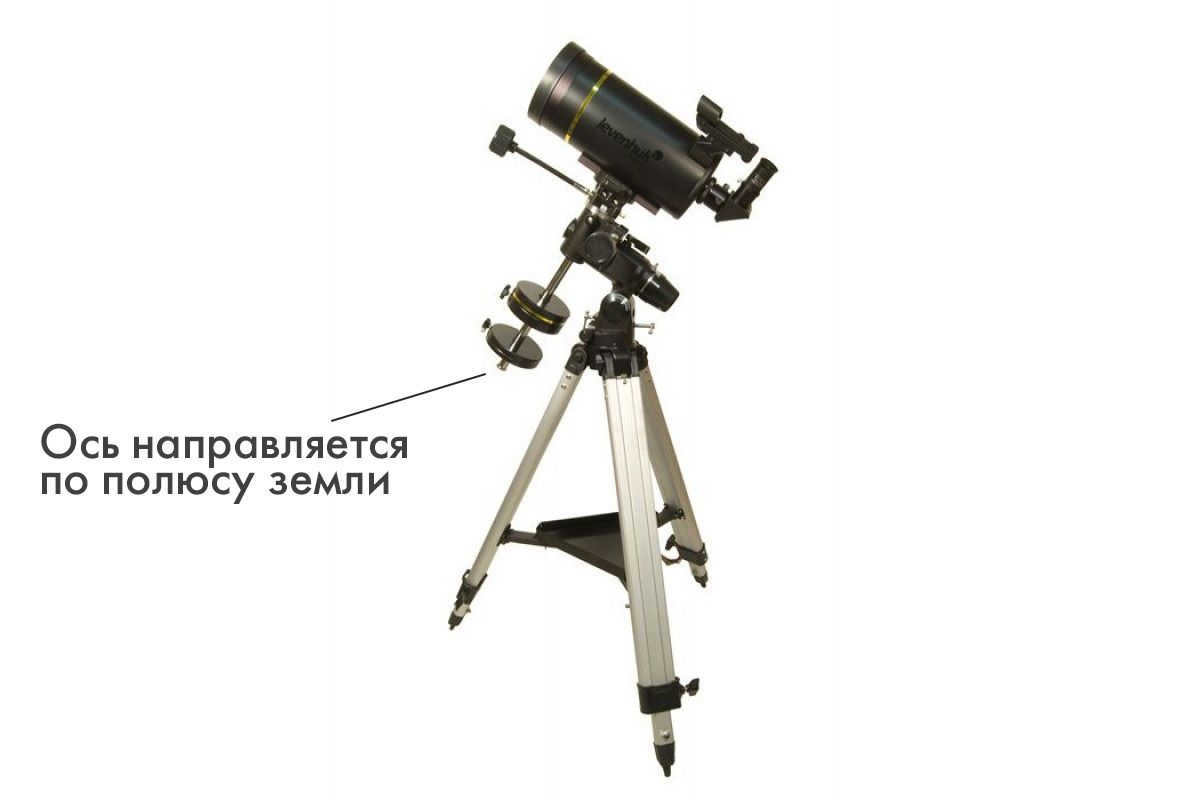
An equatorial mount is a practical solution for keeping track of celestial objects.
A pricier option, the equatorial mount offers greater convenience when observing the sky. With this type of mount, one of the axes is aligned with the Earth’s pole, allowing for observation using just one plane and one control.
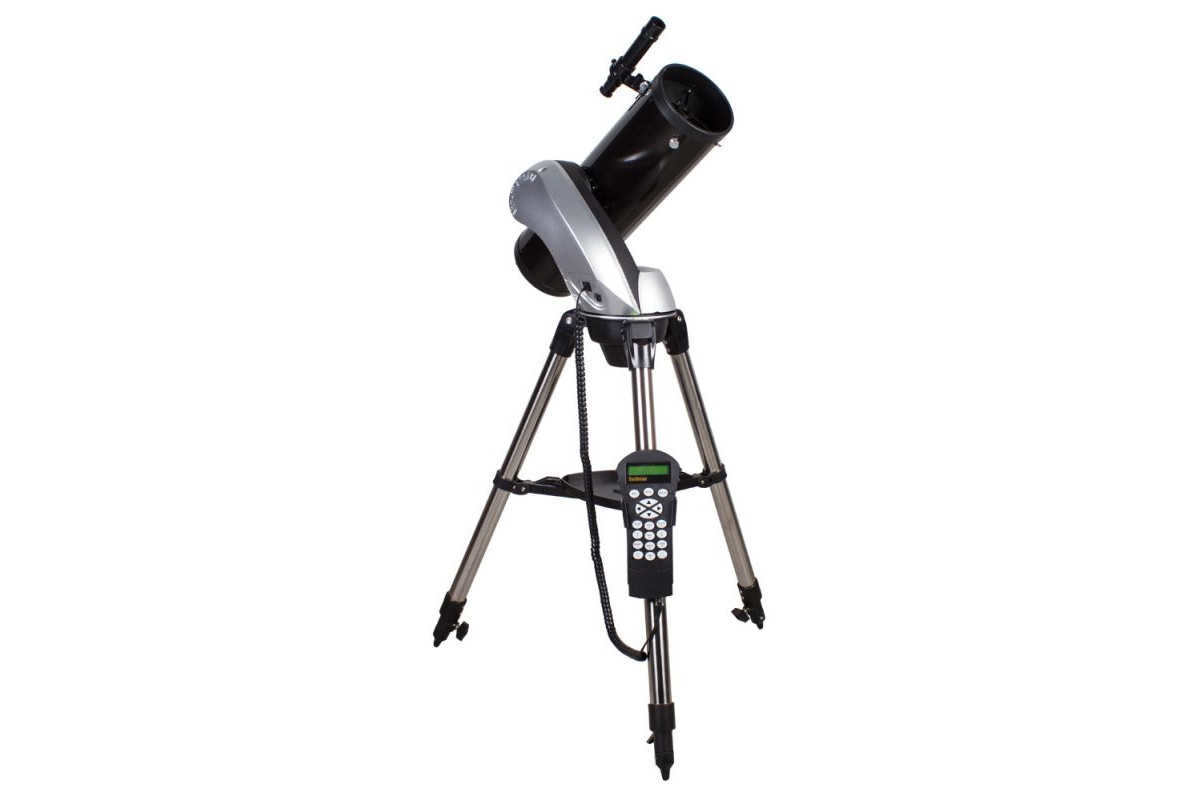
GOTO mount with automatic pointing software
This mount is the most expensive model available. It allows you to track the movement of celestial objects, keeping them within the telescope’s field of view. The mount has adjustable rotation speed and can operate continuously for several hours, making it highly advantageous.
In simpler terms, a telescope with this mount will automatically follow the movement of celestial objects. Many of these mounts come with software that includes a database of all known celestial objects. All you need to do is enter the name or coordinates of the object, and the telescope will automatically locate it.
However, there are some disadvantages to consider. The mount is costly and bulky, and it requires electricity to operate. You will need to have access to a nearby power outlet or use a portable battery.
Thermal Stabilization
An essential factor for enhancing image focus is thermal stabilization. This process involves cooling the tube and lenses to the required temperatures. In instruments with an aperture size of 50-100 mm, the thermal stabilization process typically lasts around 30 minutes. For telescopes with a larger lens diameter, it may take 1-2 hours for them to adapt to the surrounding temperature.
Why is thermostabilization necessary? The mirrors and lenses of a telescope, like any other material, can undergo changes in shape and size due to variations in ambient temperature. If you transfer a telescope from a warm indoor space to a cooler outdoor environment, the lenses will start to deform, resulting in a blurry image. These distortions will persist until the telescope and all its components reach the same temperature as the surroundings.
In order to expedite this procedure, certain manufacturers incorporate fans.
Eyepieces and additional equipment
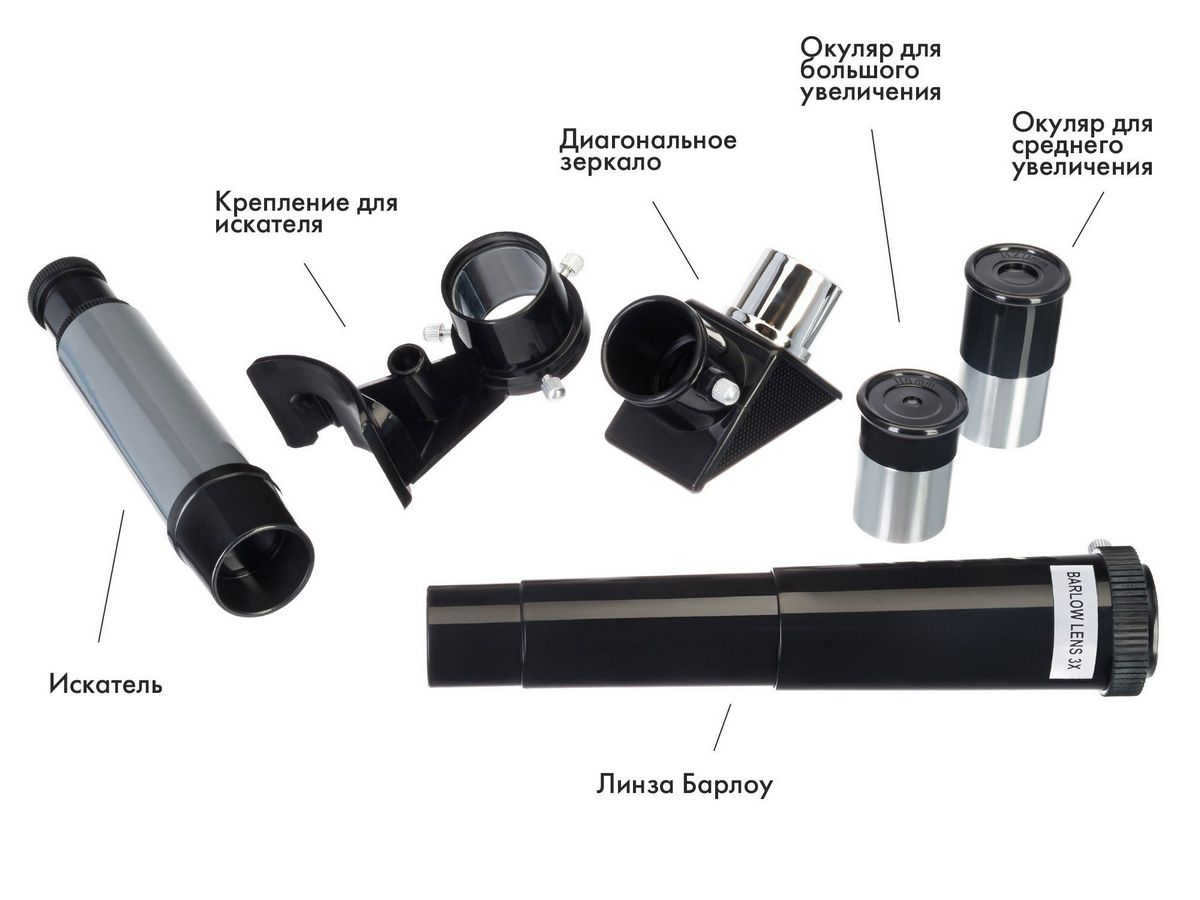
Popular telescopes come equipped with 2 eyepieces, a Barlow lens, and a rotating prism.
The more accessories a telescope has, the more comfortable and effective the observation experience will be.
Some notable accessories for telescopes include:
- Eyepieces – they allow for changing the magnification and field of view.
- Barlow lenses – they double the magnification and are particularly useful for short-focus telescopes.
- Light filters – they are used to correct colors, brightness, and contrast. For example, using a specific light filter can provide more details on the planets of the solar system and the Moon.
- A case is utilized to ensure the telescope for improved preservation;
- A finder and laser collimator are employed for initial pointing towards the observed object, positioned near the eyepiece and resembling a compact telescope or binoculars.
- A smartphone holder, T-adapters, and adapter rings are also included.
- An accessory tray is typically mounted on the telescope’s tripod.
Common errors in telescope selection
Novices often make mistakes when choosing a telescope, and here are some of the most prevalent ones:
- Purchasing a telescope with a small objective lens diameter, along with high-powered eyepieces. Beginners are often under the misconception that high magnification is the most important factor in a telescope. Exploiting this belief, marketers package small telescopes with powerful eyepieces and Barlow lenses to double the magnification, claiming that a telescope with a 50mm lens can amplify the image up to 500 times. While such magnification is technically possible, the resulting image will be dim and blurry.
- Opting for a telescope equipped with a solitary eyepiece. Various magnifications are necessary for the observation of specific celestial objects. To illustrate, when gazing at the Andromeda galaxy, it is more advantageous to utilize an eyepiece with a lesser magnification, while for a more intricate examination of the Moon, it is preferable to employ an eyepiece with a greater magnification. Take into account telescopes that offer at least two eyepieces – one with a lower magnification and another with a higher magnification.
- Consider purchasing a moderately priced telescope first. If this is your initial foray into the world of telescopes, it may be wise to start with a telescope in the mid-range price segment. This will allow you to gauge your level of interest and enjoyment before committing to a more expensive model. If you find that you truly enjoy astronomy and desire a more advanced telescope, you can always sell your current one and upgrade to a more powerful option. Telescopes in the moderate price category tend to be in high demand, ensuring that you will have little trouble finding a buyer should you decide to sell. This is not always the case with very expensive models, which can be more difficult to resell. Additionally, if your interest in astronomy wanes, an expensive telescope will simply gather dust in the corner. On the other hand, it is also not advisable to purchase a telescope that is too cheap, as these tend to have subpar quality that can greatly diminish your enjoyment of the hobby.
In recent times, the act of observing the celestial expanse appeared to be a complex and costly pastime. However, in the present day, producers provide a vast range of affordable telescopes designed for personal use. These instruments enable individuals to appreciate the splendor of cosmic vistas without even stepping foot outside their homes. We present to you a compilation of well-regarded telescope models suited for various purposes.
For a kid
Kids’ telescopes have compact dimensions, but come with a wide range of accessories. These telescopes are also equipped with an easy-to-use altazimuth mount and vibrant colors.
Levenhuk LabZZ T1 Telescope
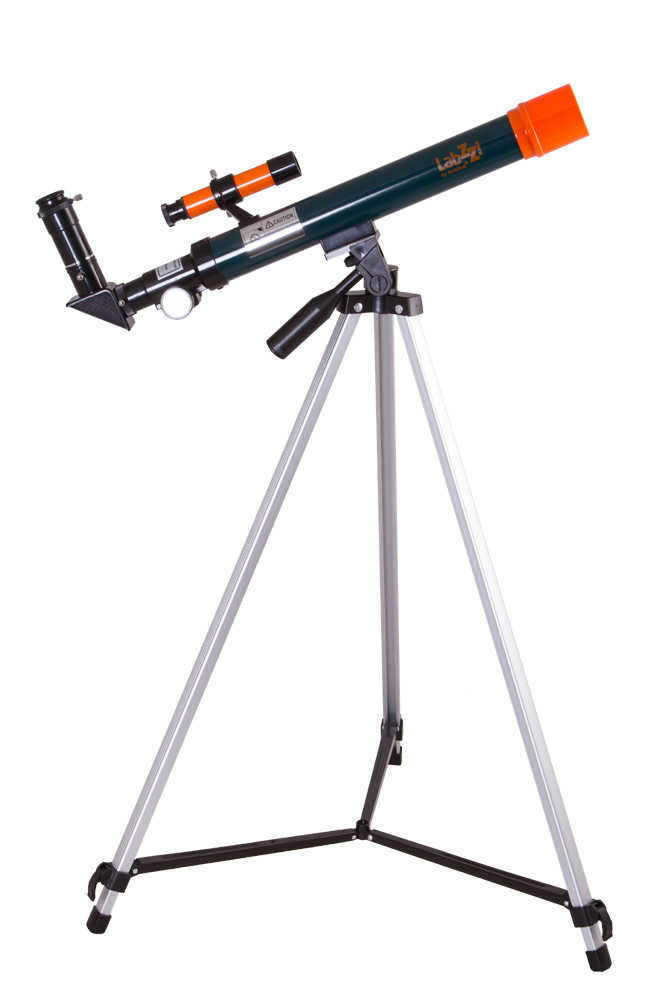
The Levenhuk LabZZ T1 Telescope is equipped with a refractor that features high-quality optics, a diagonal mirror, and an azimuthal mount. This model offers several advantages, including its ease of use, a maximum magnification of 40x, and a wide range of accessories included in the kit. It is specifically designed for observing the Moon and terrestrial objects.
Levenhuk Blitz 50 BASE Telescope
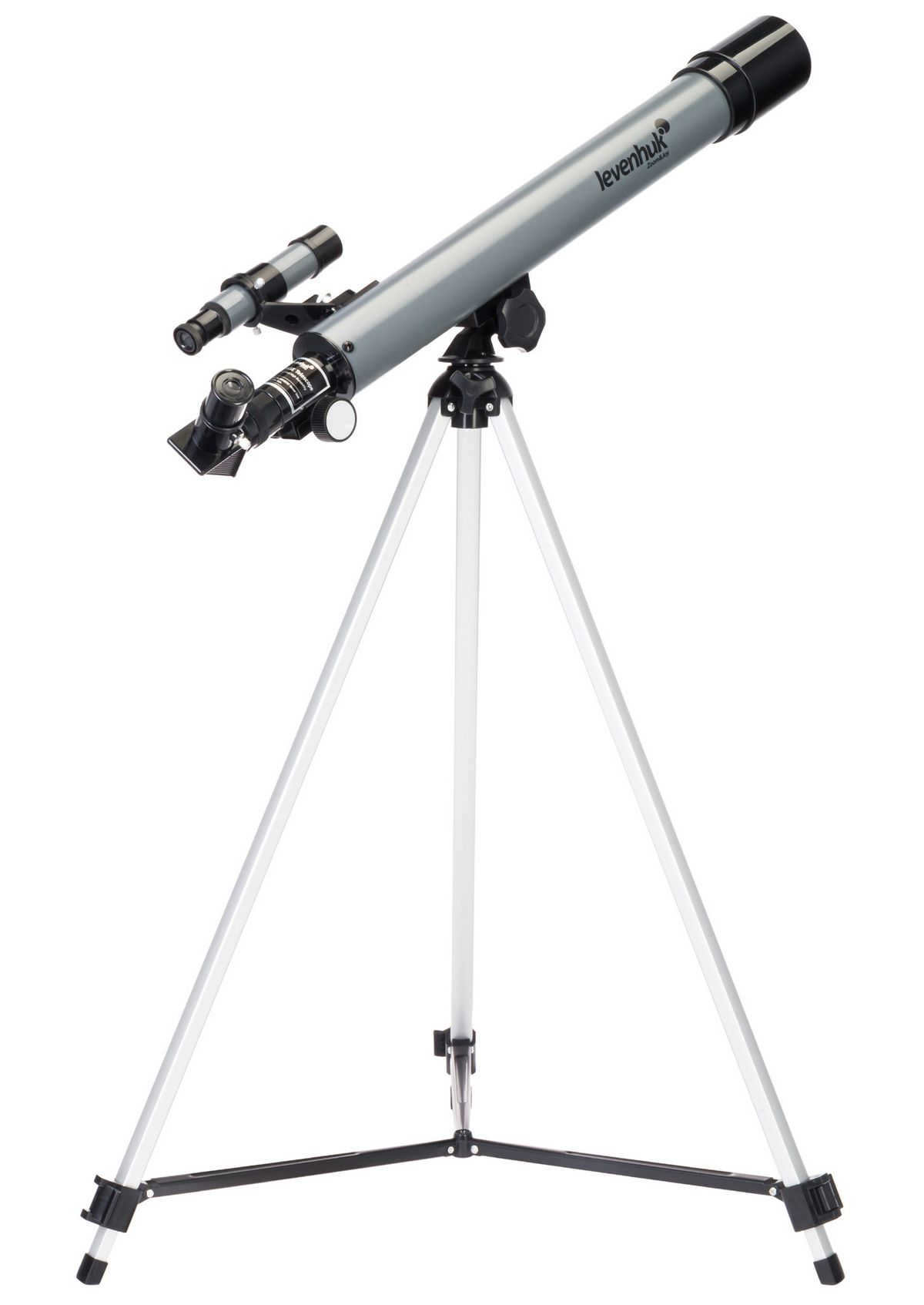
An achromatic refractor equipped with anti-reflective lenses is offered in the Bresser Junior 40/400 AZ Telescope model. This telescope boasts several key advantages, including its user-friendly operation, a 50 mm diameter lens, adjustable tripod height, and a wide range of compatible accessories. It is specifically designed for observing the Moon and various terrestrial objects.
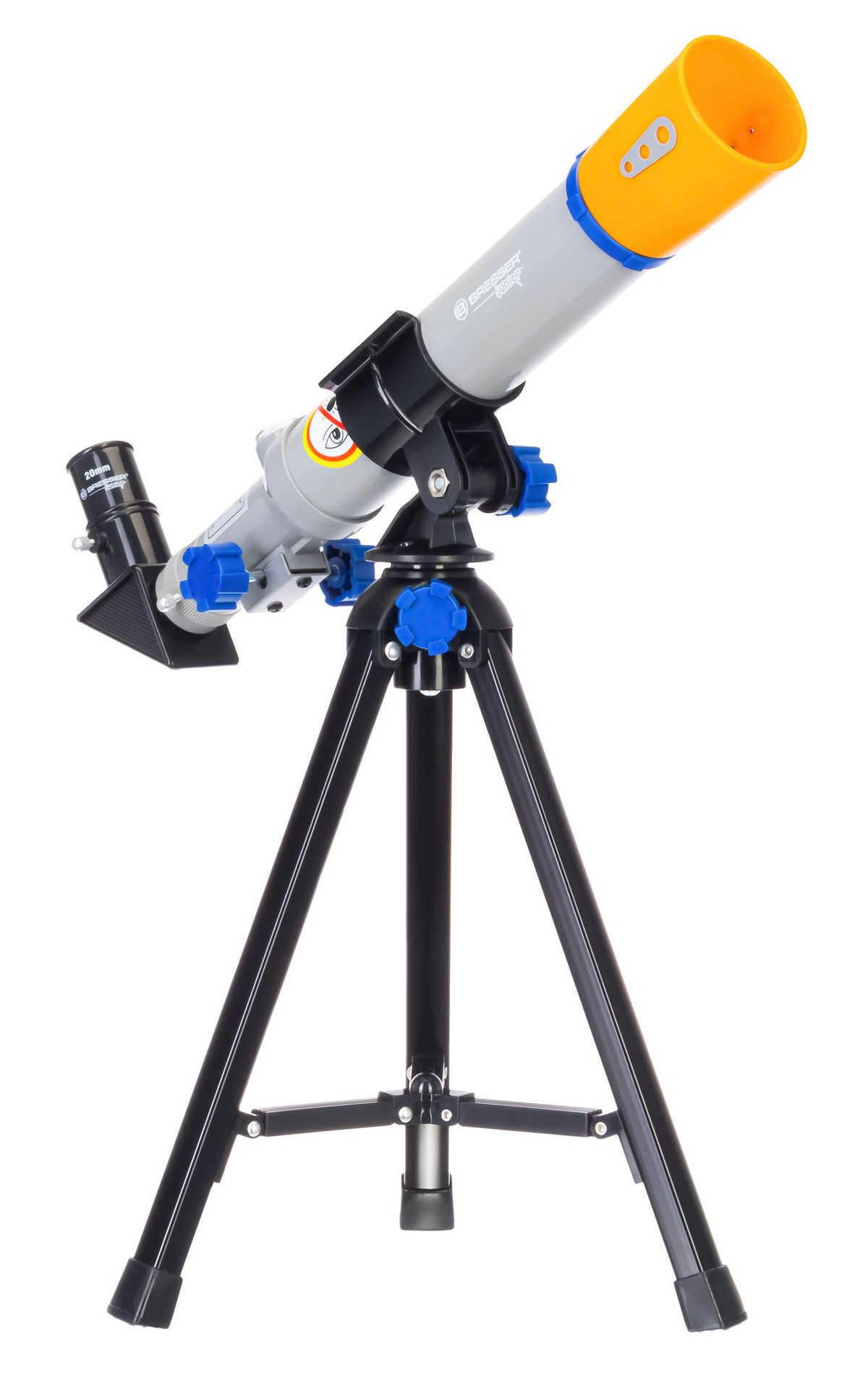
The Bresser Junior 40/400 AZ Telescope is a refractor that comes with a table tripod and a diagonal mirror. It offers a compact size, easy operation, a built-in compass, an azimuthal mount, and a vibrant color scheme.
For observing stars, galaxies, and deep space
When it comes to observing deep space, having the highest magnification is not the most important factor. Instead, the size of the lens plays a crucial role. That’s why mirror telescopes, also known as reflectors, are the preferred choice. With reflectors, you can get a more powerful telescope (with a larger aperture) for a better price compared to refractor telescopes.
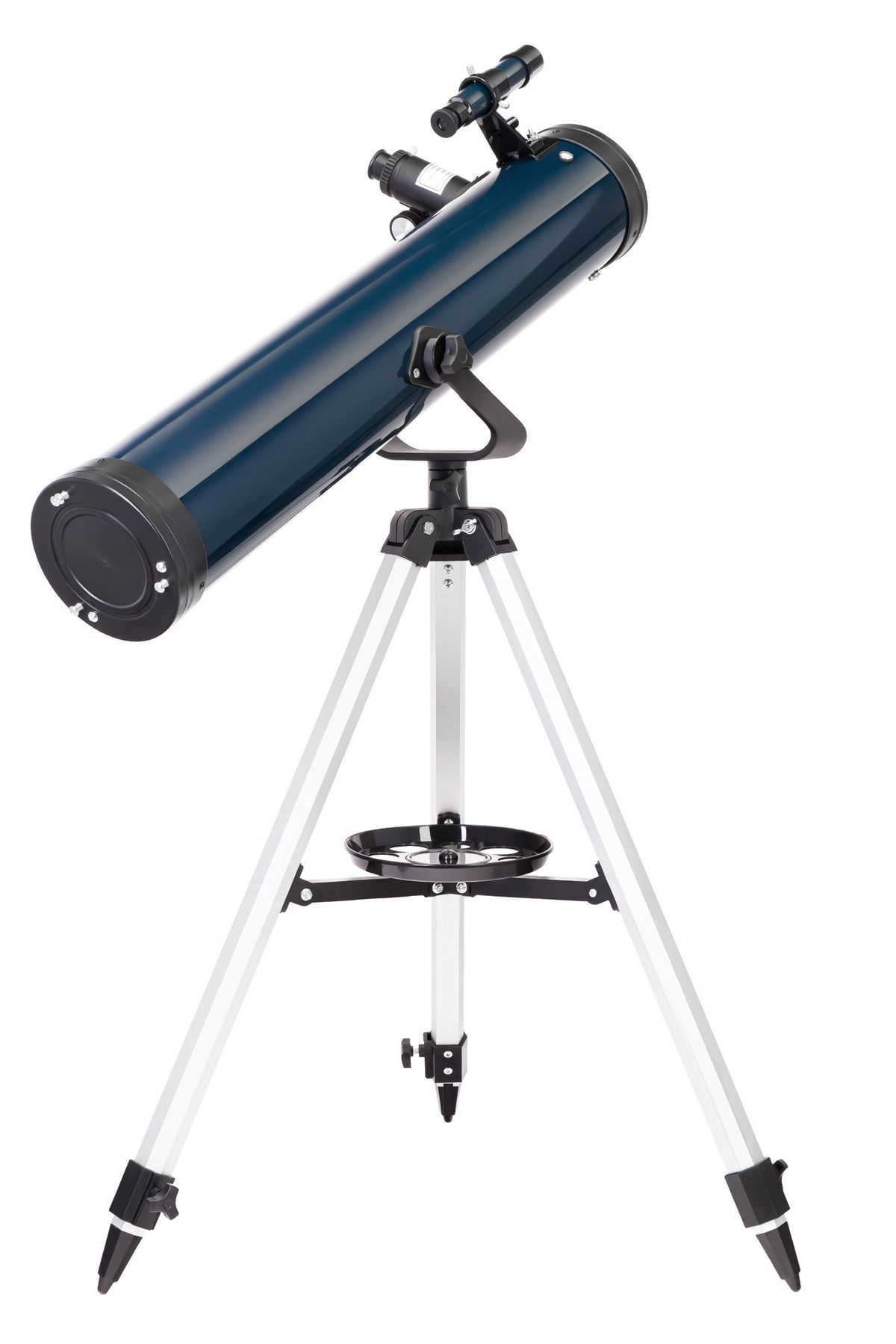
A Newtonian reflector mounted on a convenient stand is available. This model offers precise and seamless control, a wide range of accessories, and an aluminum tripod with an accessory tray. It is suitable for observing celestial objects such as stars, galaxies, and nebulae, both near and far.
The Levenhuk Blitz 114s PLUS Telescope
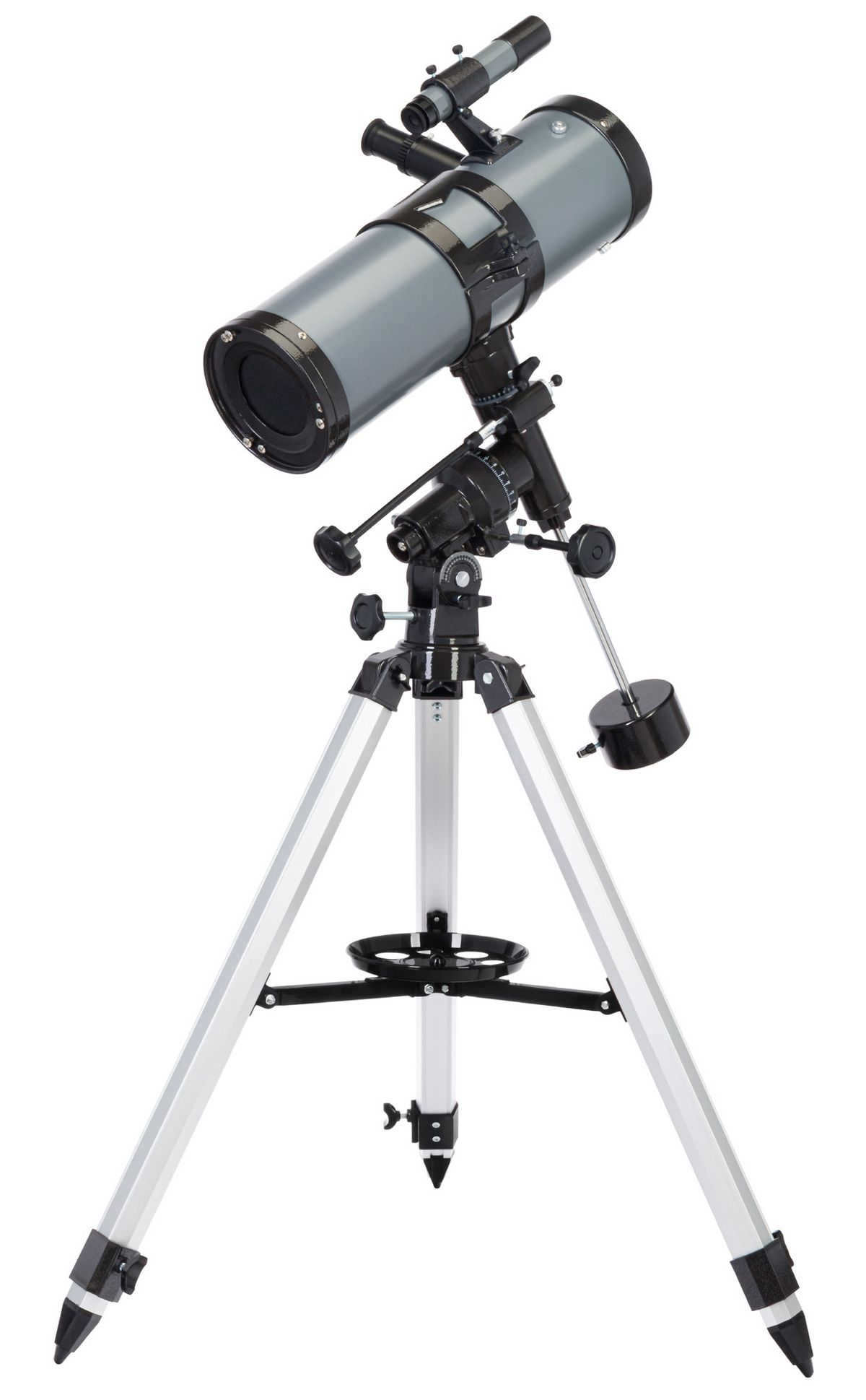
The Levenhuk Blitz 114s PLUS Telescope is a refractor with a short focus and high aperture. It offers several advantages when it comes to optical equipment. Firstly, it performs excellently in observing both near and far space. Secondly, it can be utilized at a professional level, making it suitable for advanced users. Additionally, it comes with a wide range of optical accessories included in the kit. The telescope also features an aluminum tripod with an equatorial mount, which makes it ideal for astrophotography.
The Bresser Spica 130/1000 EQ3 telescope
is a unique optical instrument that offers exceptional viewing capabilities. With its high-quality optics and sturdy EQ3 mount, this telescope is perfect for both amateur and professional astronomers. Whether you’re observing the moon, planets, or deep-sky objects, the Spica 130/1000 EQ3 telescope will provide you with breathtaking views. Its compact size and lightweight design make it easy to transport and set up, so you can take it with you on your next stargazing adventure. Experience the wonders of the universe with the Bresser Spica 130/1000 EQ3 telescope.
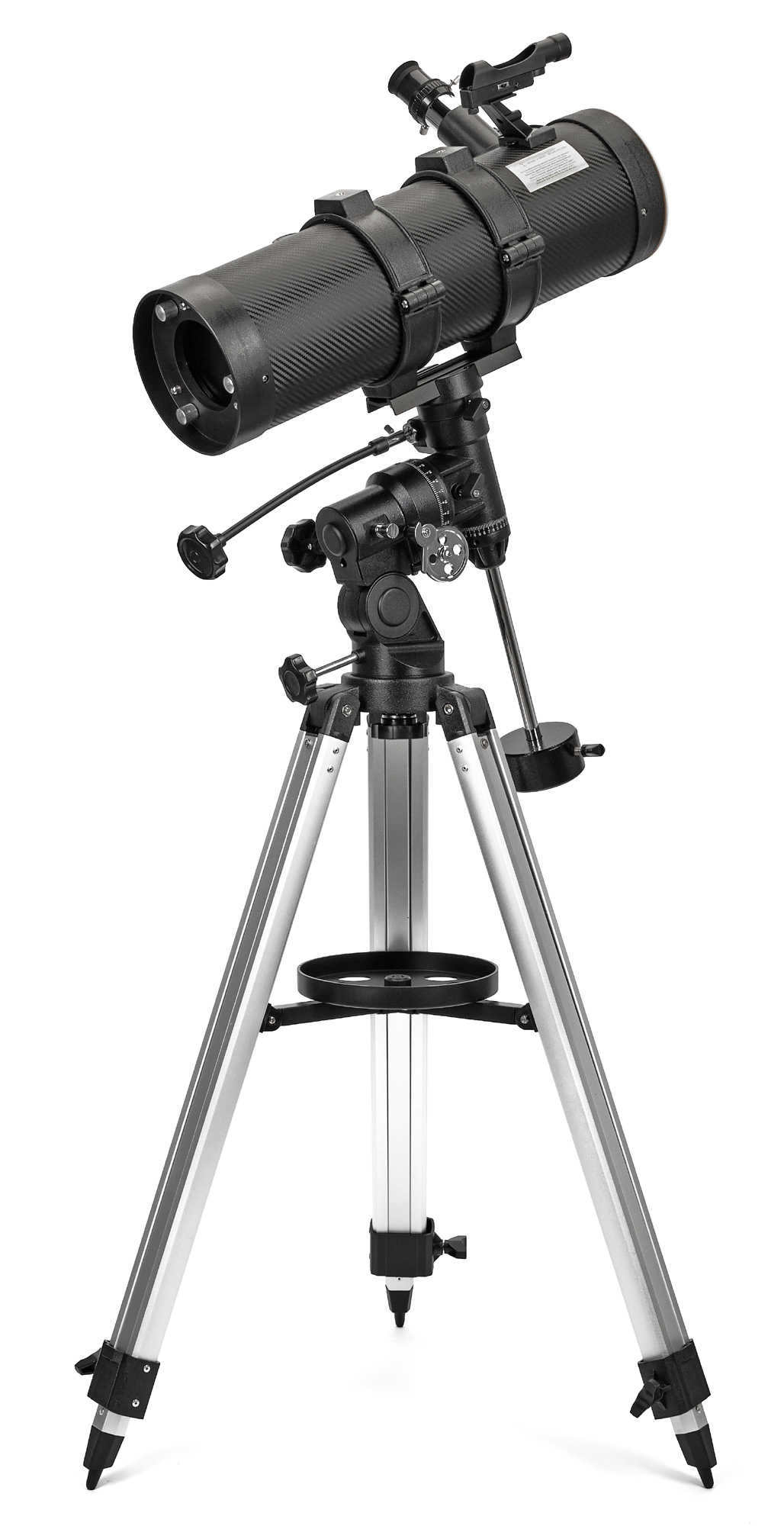
A solar filter-equipped Newton reflector telescope. The benefits of this equipment include exceptional optics, effortless search and alignment, a wide range of accessories included, impressive performance for observing both the planets within our solar system and the distant corners of deep space, and even a smartphone adapter for capturing breathtaking images.
The preference is given to lenticular telescopes (refractors) due to their ability to provide a clear and contrasting image with details on various celestial objects. These telescopes, with their smaller lens diameter, allow for a good magnification, enabling observers to see mountains and craters on the Moon, the terminator line, polar caps on Mars, the rings of Saturn, and spots on Jupiter.
The Bresser Classic 60/900 EQ Telescope: An Unparalleled Viewing Experience
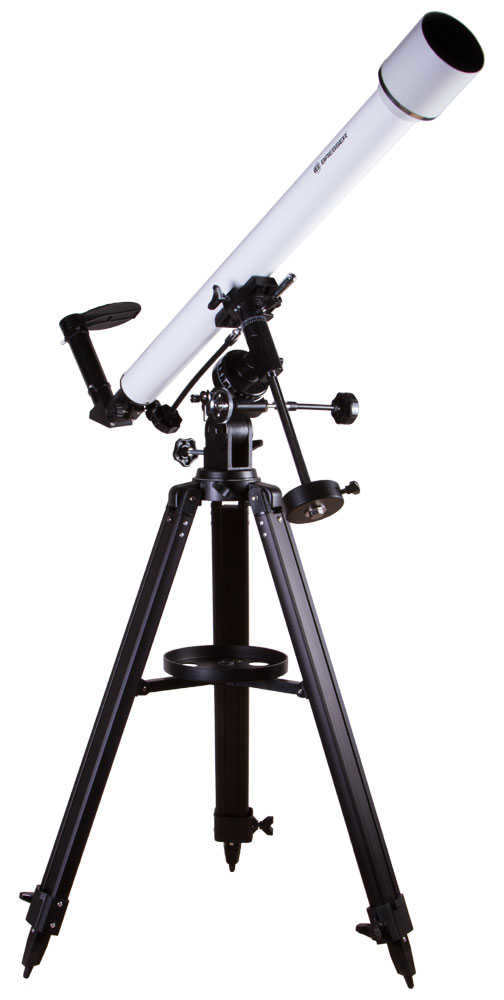
The Bresser Classic 60/900 EQ is a refractor telescope with an equatorial mount. This model offers a long-focus optical tube, a wide range of accessories, and a unique adapter for attaching a phone to the eyepiece, allowing you to take photos. With its optimal lens diameter of 60 mm and a focus of 900 mm, this telescope provides excellent image quality.
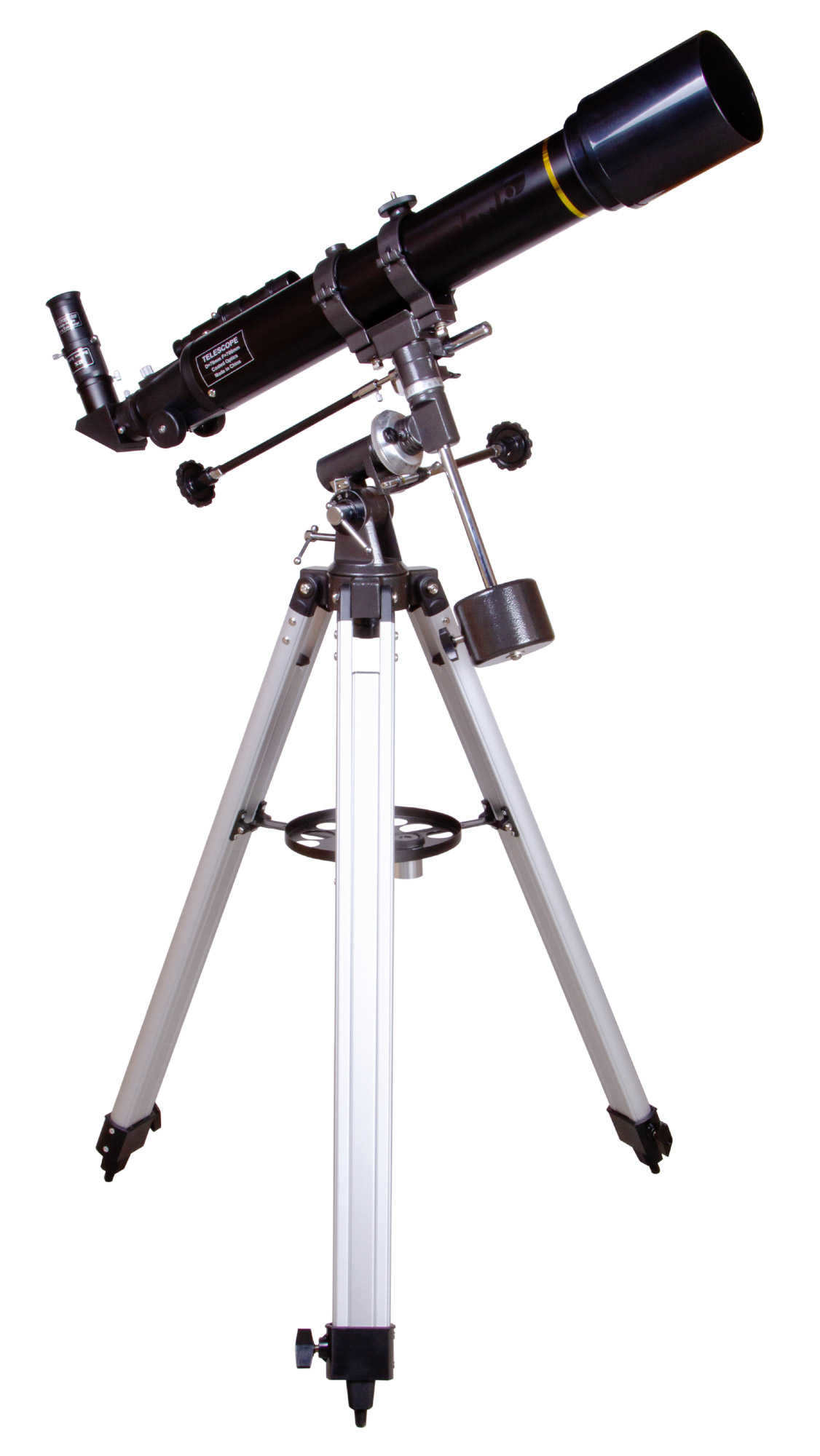
The equatorial mount refractor offers several benefits, including its compact size, extensive equipment, user-friendly operation, and dependable tripod.
The Konus Konuspace-4 50/600 AZ Telescope

The Konus Konuspace-4 50/600 AZ Telescope is a refractor with a short focus and an azimuthal mount. This optical instrument offers several advantages, including high resolution, a 50 mm objective lens, a 600 mm focus, a compact size, and an included diagonal mirror.
When it comes to observing from the ground
Telescopes used for ground-based observations offer a unique perspective with their non-inverted image and user-friendly azimuthal mount.
Introducing the Levenhuk LabZZ T1 Telescope

The Levenhuk Skyline BASE 60T telescope is equipped with top-notch optics and offers a magnification of 40x. The device stands out for its user-friendly operation, compact design, and extensive range of accessories. Additionally, it features adjustable legs and a tripod crafted from lightweight aluminum.
Discover the Levenhuk Skyline BASE 60T Telescope
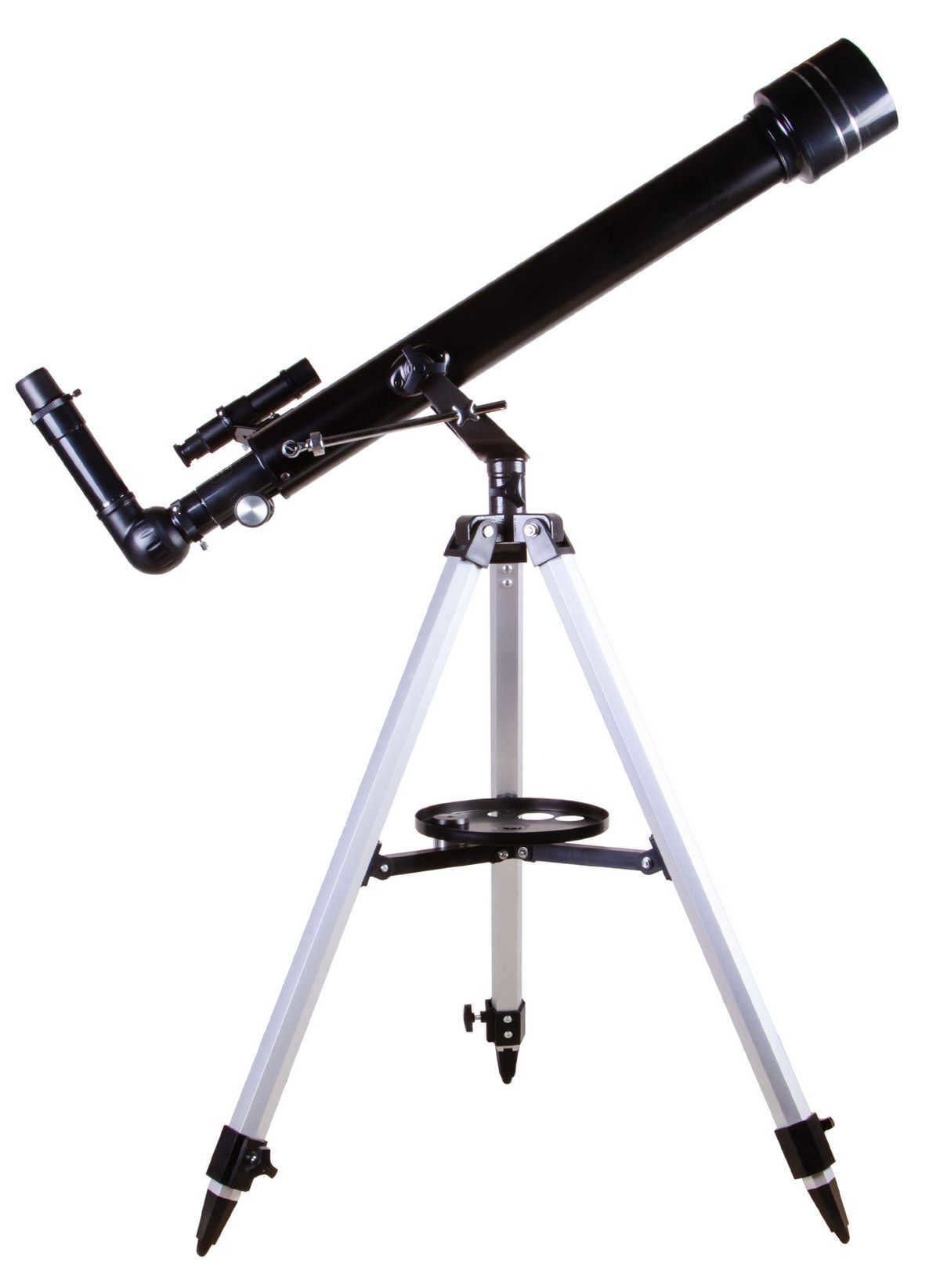
An optical refractor offers several benefits, including illuminated optics, an azimuthal mount for easy positioning, user-friendly operation, and the ability to produce clear and vibrant images. Additionally, it provides a wide range of optical elements to choose from.
Introducing the Discovery Sky T50 Telescope
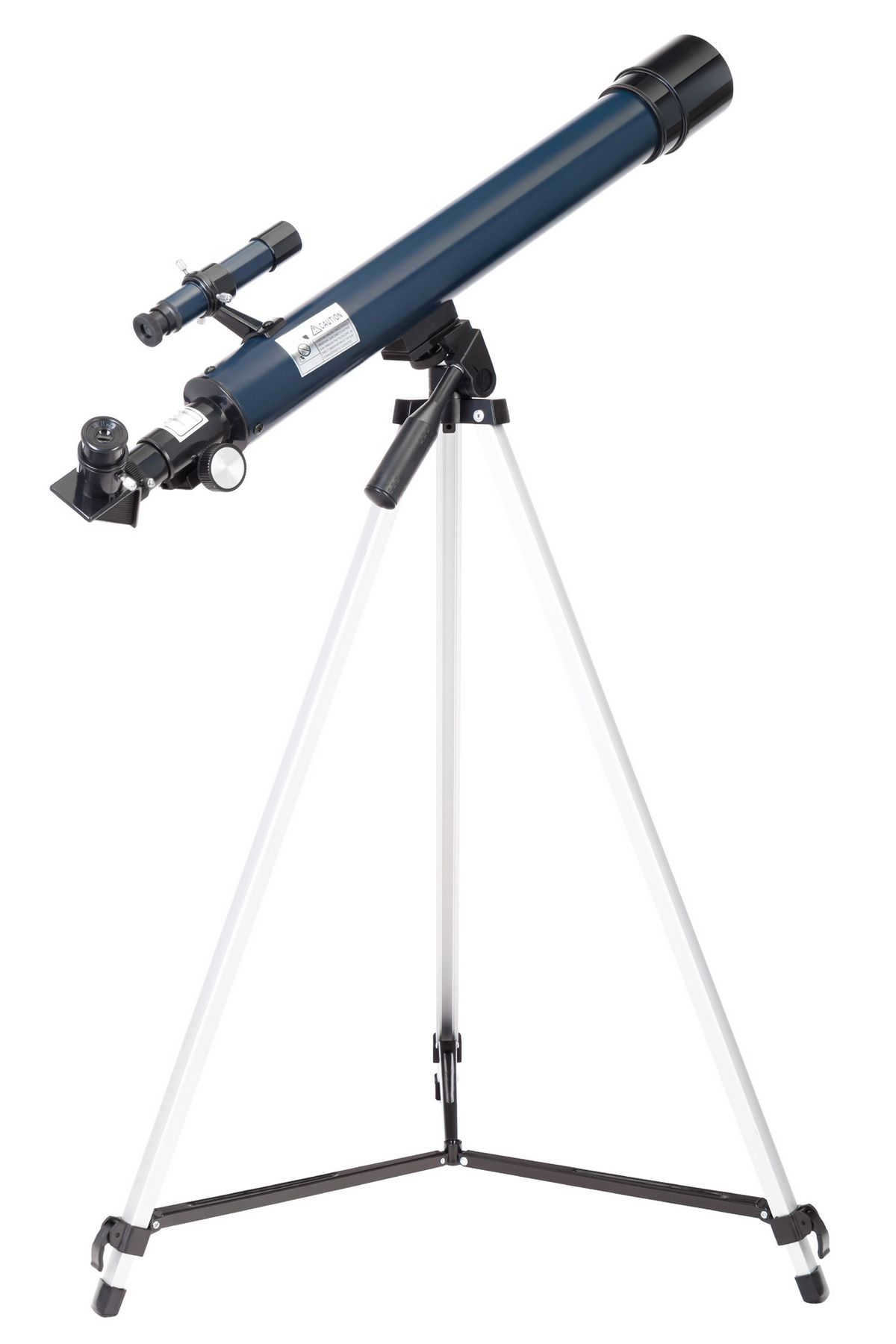
The Discovery Sky T50 Telescope is equipped with a refractor and an optical seeker, along with an azimuthal mount. This model offers a user-friendly experience and comes with a wide range of additional accessories included in the kit. It also features a diagonal mirror and a stable aluminum tripod, ensuring stability and ease of use.
It is important to note that while we have categorized telescopes based on their intended observation purposes, this does not imply that a telescope listed under “observation of planets” cannot be used to observe stars and galaxies, and vice versa. All the telescope models we have provided are well-rounded, designed for beginners and hobbyists, and can be used for a wide range of purposes. Only a professional astronomer would be able to discern the subtle differences in their features, as telescopes in different price ranges are typically utilized for more specialized and specific purposes.
Final Thoughts
After going through our article, we trust that you have gained valuable insights into the process of selecting your inaugural telescope. In case you still have any lingering inquiries, feel free to leave a comment and we will do our best to respond and further enhance the content.
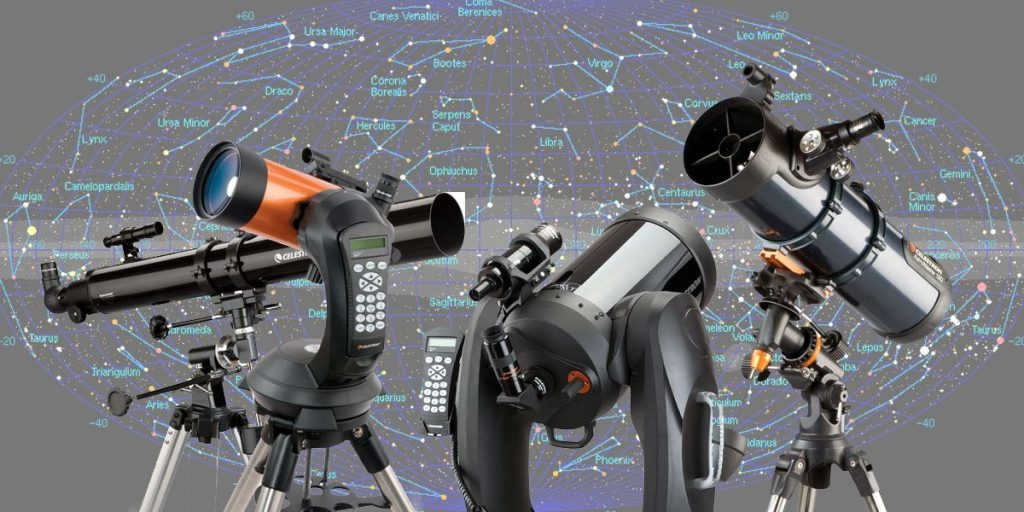
All enthusiasts of astronomy inevitably reach a point where they decide to purchase their own telescope.
Nowadays, there are numerous stores that offer a wide range of telescopes to cater to every preference and budget. However, many consumers find themselves asking the same question: which telescope should a beginner choose from the vast selection available? It can be quite challenging to make the right choice.
Prior to making a decision and purchasing a telescope, it is important to determine the purpose for which it will be used and the specific functions that the user will require. This decision will guide the further selection process. Another important consideration is whether to opt for a reflector or a refractor telescope. The advantages and disadvantages of each option are outlined below.
Reflector
Advantages of the reflector:
– No colored edging around observed objects;
– Possibility to purchase a device with a large aperture;
– Small size and, therefore, compactness and mobility.
Disadvantages of the reflector:
– Air currents entering the open tube of this instrument can significantly affect the image quality;
– Mirrors degrade quickly and become unusable, as well as susceptible to deformation;
– The instrument’s light transmission percentage does not exceed 70 percent;
– When observing terrestrial objects, the image is inverted.
Refractor
Advantages of a refractor:
– The inclusion of additional surfaces between the eyepiece and objective lens results in reduced light loss;
– Long lifespan of the device;
– High quality and brightness of the image;
– Excellent protection of the instrument from dust, dirt, and air currents, as it is tightly sealed from any external influences;
– Large field of view.
Disadvantages of a refractor:
– The presence of various spots, colored fringes, and stripes on the image, which significantly diminishes the clarity of the picture;
Choosing the Right Telescope
In order to make an informed decision about your telescope purchase, it’s important to carefully consider the pros and cons of each device. For beginners, it’s not only about the image quality and clarity, but also about the size of the telescope, its user-friendliness, and the ability to set it up at home. These are the key factors that a novice astronomer should take into account.
Check out this video guide for more information on how to choose the right telescope.
Enjoyed this post? Share it with your friends!
What sets refractors apart from reflectors?
What sets refractors apart from reflectors? The key component of an optical telescope is the objective lens, which is specifically crafted to gather the rays emitted by the object under scrutiny and concentrate them. Telescopes are categorized into refractors and reflectors depending on the type of lens employed.
What sets spiders apart from insects?
How do animals contrast with plants?
What distinguishes animals from plants? The majority of organisms on Earth fall into two categories: plants or animals. Only a small number of protozoan organisms cannot be classified into either group. However, what sets them apart? Despite their differences?
What are the differences between porcupines and hedgehogs?
Porcupines and hedgehogs have distinct differences. While porcupines are not typically found in our region, they are prevalent in various locations worldwide. Their habitats include Africa, India, South America, the United States, Canada, and parts of Europe. Additionally, porcupines exhibit a wide range of sizes, with some being quite small.
What sets rabbits apart from hares?
What distinguishes hares from rabbits? Although hares and rabbits share many similarities, they are part of the same category of creatures – rodents. As a result, their front teeth are elongated and pointed. Despite their predominantly herbivorous diets, both hares and rabbits continuously nibble on tree bark.
TELESCOPES 1: REFRACTORS AND REFLECTORS A telescope is a device created to enlarge distant objects or enhance the brightness of point objects like stars. A refractor telescope, which is a simple type of telescope, consists of two convex lenses: an objective lens and an eyepiece. The objective lens creates a real image that can be magnified and viewed through the eyepiece.
What are the differences between arteries and veins?
How do arteries differ from veins? The circulatory system of the body is incredibly efficient, surpassing any urban transportation system. To illustrate the difference, imagine two piping systems, one larger and one smaller, converging at a pumping station.
Similarities and Differences between the Arctic and Antarctic
The Arctic and Antarctic share many similarities, but also have distinct differences. One common factor is the presence of frost throughout the year, regardless of the season. However, it is important to note that the perception of “hot” in Russia’s southern regions only applies to the Northern Hemisphere. Once we cross
What sets men apart from women?
What sets men apart from women? The disparities between men and women are undeniable. And it’s not just about physical attributes and physiology. Men and women are inherently distinct and bear little resemblance to one another due to their divergent objectives, desires, and overall characteristics.
What is the distinction between a fjord and a fjord?
What is the distinction between a fjord and a fjord? Fjords are shallow bays with low but steep rocky shores and an abundance of skerries. Sweden and Finland have numerous fjords. On the other hand, fjords are narrow, winding, and deep bays along the mountainous coastline, often of considerable length.
Both refractors and reflectors are optical instruments. Telescopes are commonly referred to in this manner for convenience. “Reflector telescope” and “telescope-refractor” are quite lengthy to spell out 🙂 However, these terms can be applied to more than just telescopes. For instance, most binocular models are refractors. All radio telescopes are refractors.
2. Reflectors, also known as “reflexion” or “reflection,” create an image by reflecting light rays from the main mirror-lens.
Mirrored optical telescopes, known as reflectors, are generally considered superior to refractors for several reasons. They experience fewer optical aberrations (distortions) and are lighter in weight at the same magnification. Telescopes of a mixed type, such as the meniscus telescope Maksutov, exhibit good indicators on aberrations. In this type of telescope, the main image is still formed by the mirror, but the light rays first pass through the meniscus, which, in combination with the mirror, helps to eliminate most of the optical aberrations.
Reflectors have surpassed refractors in terms of size a long time ago: just imagine how heavy a two-meter lens would be! A mirror is much lighter. I can’t recall the exact diameter of the largest refractor, but the world’s largest mirror optical telescope has a 6-meter diameter mirror!
Refractors are designed with a lens (you look directly through a large “magnifying glass” at the object).
Reflectors, on the other hand, use mirrors (light doesn’t pass directly, but through a system of mirrors).
What brings them together is that both are optical instruments.
What brings them together is that both are telescopes. Based on the type of element used to gather light rays at the focal point, all modern consumer telescopes are categorized as refractors (lenticular), reflectors (mirror), and catadioptric (mirror-lens).
Galileo’s telescope in 1609 was a refractor telescope, which falls under the category of optics. These instruments operate based on the principle of refraction, which involves the bending of light. Around 60 years later, in the late 1668, the British physicist and astronomer Isaac Newton designed a different type of telescope called a reflector telescope. This telescope utilized a mirror as its main focusing element, relying on the reflection of light.
A refractor telescope, on the other hand, incorporates two lenses to refract the light rays. It consists of a large lens known as the objective lens, which serves as the entrance for the light, and a smaller lens called the eyepiece for the observer’s eye. The objective lens is responsible for producing a significantly reduced image of the distant object being observed.
What sets the designs apart?
The production of refractors (1) is complex due to the challenging task of machining a lens, particularly a large one, to meet high-quality standards. On the other hand, reflectors (2) are based on concave mirrors, which are much easier to manufacture compared to lenses used in refractors. Refractors generally offer superior image clarity and minimal distortion.
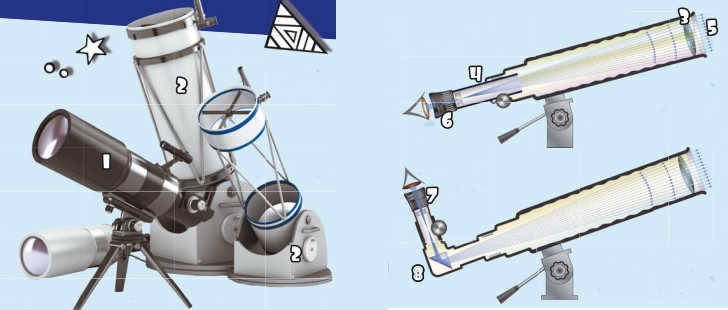
How does a refractor telescope function?
A refractor telescope operates by utilizing an objective lens (3) to generate a significantly diminished representation (4) of a faraway observation target (5). This depiction is subsequently observed via the eyepiece (6), akin to the way an object appears when viewed through a magnifying glass. In certain variations, the eyepiece is situated off the tube’s axis and is instead perpendicular to it (7). In such cases, the image from the lens is conveyed to the eyepiece through a refractive lens (8).
In the case of a reflector telescope, a focused beam of light rays (10) is gathered by a concave mirror (9). Auxiliary lenses and mirrors (11) are used to redirect this beam towards the eyepiece (12). Similar to refractor telescopes, certain reflectors are equipped with an eyepiece (13) positioned at a right angle and an extra refracting lens (14).
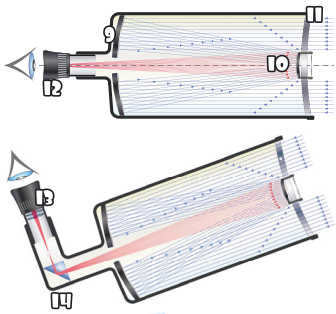
Paris Giant
A refractor telescope of unprecedented size was constructed specifically for the 1900 World’s Fair held in Paris. Remarkably, the lens boasted a diameter of 1.25 meters, while the length of the tube stretched over 60 meters! Regrettably, due to its immense dimensions and weight, the telescope was permanently fixed in a horizontal position. This positioning proved to be quite inconvenient for practical usage, ultimately leading to the dismantling of the telescope in 1909.
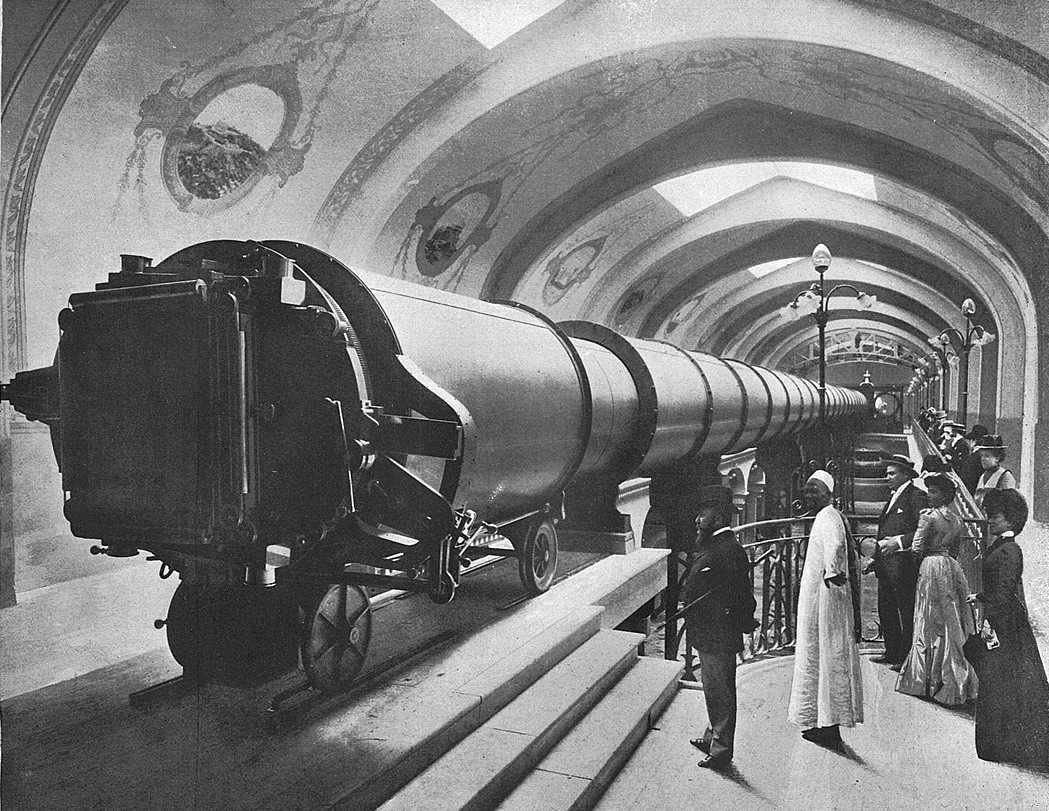
The exceptional reflector
Reflector telescopes surpass refractors in size by a significant margin. Housed within the expansive dome of the Roque de los Muchachos Observatory in the Canary Islands, the Great Canary Telescope proudly holds the title for the largest mirror in the world. Constructed in 2007, its mirror boasts an impressive diameter of 10.4 meters – a staggering ten times larger than the lens found in the largest refractor!

Unprecedented refractor
The University of Chicago’s Yerkes Observatory is home to the largest refractor telescope in the world, boasting a lens diameter of 1.02 meters. This impressive size enables the observation of even the most distant objects within the Solar System. Established in 1897, the Yerkes Observatory has housed this groundbreaking telescope since its inception.
When it comes to amateur astronomers, they primarily rely on two traditional telescope types for their observations. These include refractor telescopes, which utilize lenses to form images, and reflector telescopes, which employ mirrors for this purpose.
In some cases, catadioptric systems, which combine multiple lenses and mirrors (known as mirror-lens telescopes), are used to create images.

When we think about gazing at the twinkling night sky, we often envision something like this. However, I must inform you that the reality is quite different from this idyllic image.
The primary component of any telescope that constructs the visual representation is the lens. The lens’s characteristics, such as its aperture D and focal length/focal ratio f/D, determine the range of observations that can be conducted with a specific telescope.
Naturally, telescopes with a wide aperture (featuring a larger objective lens diameter) are preferable because they possess a greater light-gathering surface, offer a higher resolving power, and provide significant magnification. Nevertheless, telescopes with a larger aperture, regardless of their type, tend to be more costly and cumbersome.
Telescopes and Binoculars: Exploring the Gathering and Resolving Power
When it comes to telescopes and binoculars, one of the most crucial factors to consider is the aperture (D), which refers to the diameter of the objective lens.
The aperture plays a significant role in determining the size of the collecting surface. Essentially, the larger the collecting surface, the greater the area available for gathering light. This means that telescopes or binoculars with larger apertures allow for the observation of fainter objects. In fact, the area of the collecting surface is directly proportional to the square of the diameter. Hence, the square of the objective lens diameter serves as a determining factor for the maximum stellar magnitude that can be observed with a specific telescope.
Another essential characteristic to consider is the resolving power of a telescope. This refers to its ability to distinguish the smallest details in the disks of planets or double stars.
The resolving power, expressed in arc seconds, is determined by the value 138 divided by the diameter of the objective lens measured in millimeters.
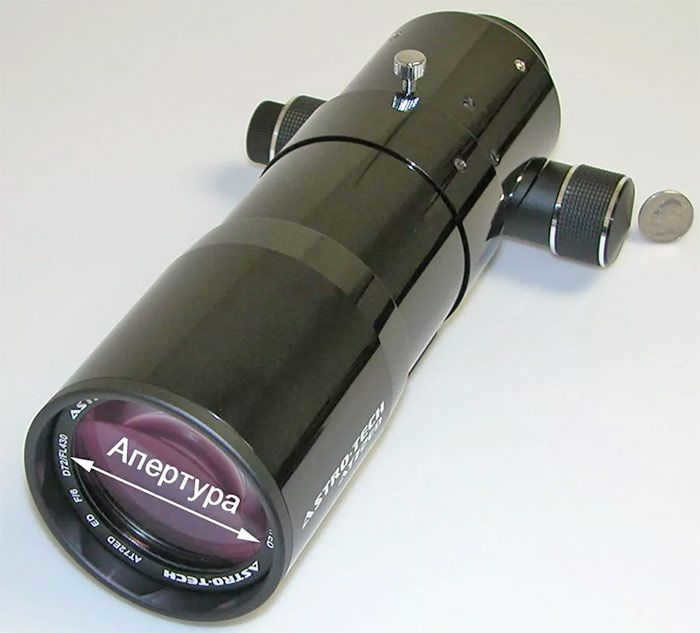
What does the term “aperture” refer to in relation to a telescope?
When it comes to long focal length lenses with focal ratios greater than f/12*, the resolving power is slightly higher and can be determined by the formula 116/D.
The resolving power of reflectors and catadioptric telescopes is slightly lower compared to refractor telescopes with the same objective lens diameter. This can be attributed to the shielding of the central part of the light beam that passes through the objective lens. Additionally, air currents in the telescope tube can significantly impact the image quality, particularly in reflector telescopes.
Refractor telescopes
An achromatic system, composed of multiple lenses, is utilized in refractor telescopes to gather rays of varying wavelengths and concentrate them into a singular focal point.
Amateur refractors generally possess focal ratios below f/10 or f/12 due to the high cost of shorter focal length achromatic lenses. Consequently, refractors are most suitable for observations necessitating large focal ratios, relatively high magnifications, and a restricted field of view.
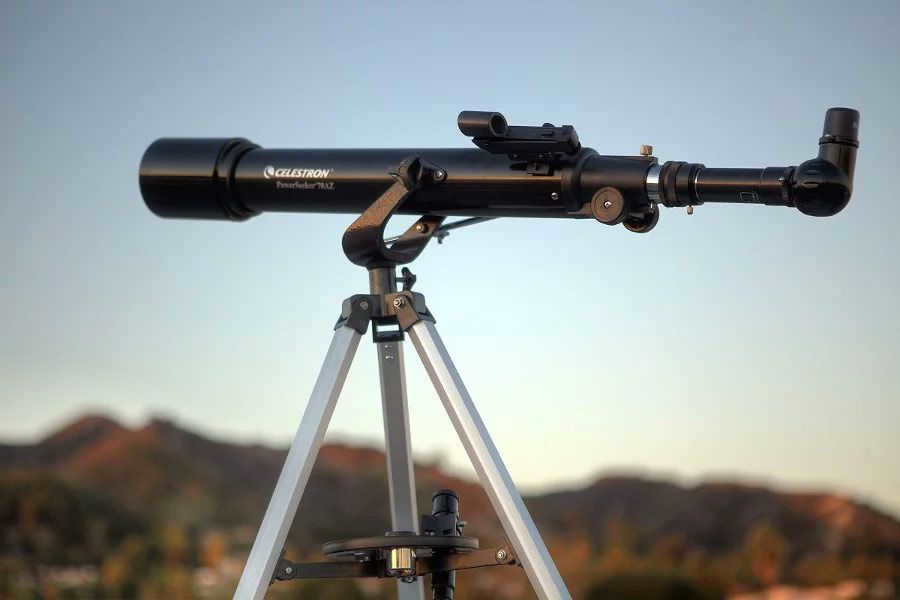
When it comes to serious observations, it is recommended to use telescopes with an aperture size of at least 75 mm.
Although it is possible to make observations with telescopes that have smaller apertures, it should be noted, especially for beginners, that such observations can be challenging. As a result, observations made with good binoculars may actually be more effective than those made with a telescope that has a smaller aperture.
Unlike other types of telescopes, refractors do not experience any losses due to partial shielding of the light beam by intermediate mirrors. However, it is typical to use refractors with lenses that are less than 100 mm in diameter for observations.
Large refractors with apertures over 150 mm are rarely found, as they tend to be quite expensive and bulky.
Reflecting Telescopes
Reflector telescopes, also known as reflecting telescopes, are a popular choice for amateur astronomers. They offer several advantages over refractor telescopes, making them more convenient for certain types of observations.
Most amateur reflector telescopes have focal ratios ranging from f/6 to f/8. This means that they have a wider field of view and lower magnification compared to refractors. These characteristics make reflector telescopes particularly well-suited for observations that require a broader perspective.
There are different types of reflector telescopes, but the two most commonly used in amateur observing practice are the Newton system and the Cassegrain system.
The Newton system telescope has a flat secondary mirror, which means that the focal length and focal ratio of the objective remain constant. On the other hand, the Cassegrain system telescope features a convex secondary mirror. This design greatly increases the total focal length of the telescope, resulting in a change in its effective focal ratio.
Due to this change in focal ratio, Cassegrain reflectors can be used for the same types of observations as refractor telescopes. They offer a similar viewing experience, despite their different optical designs.
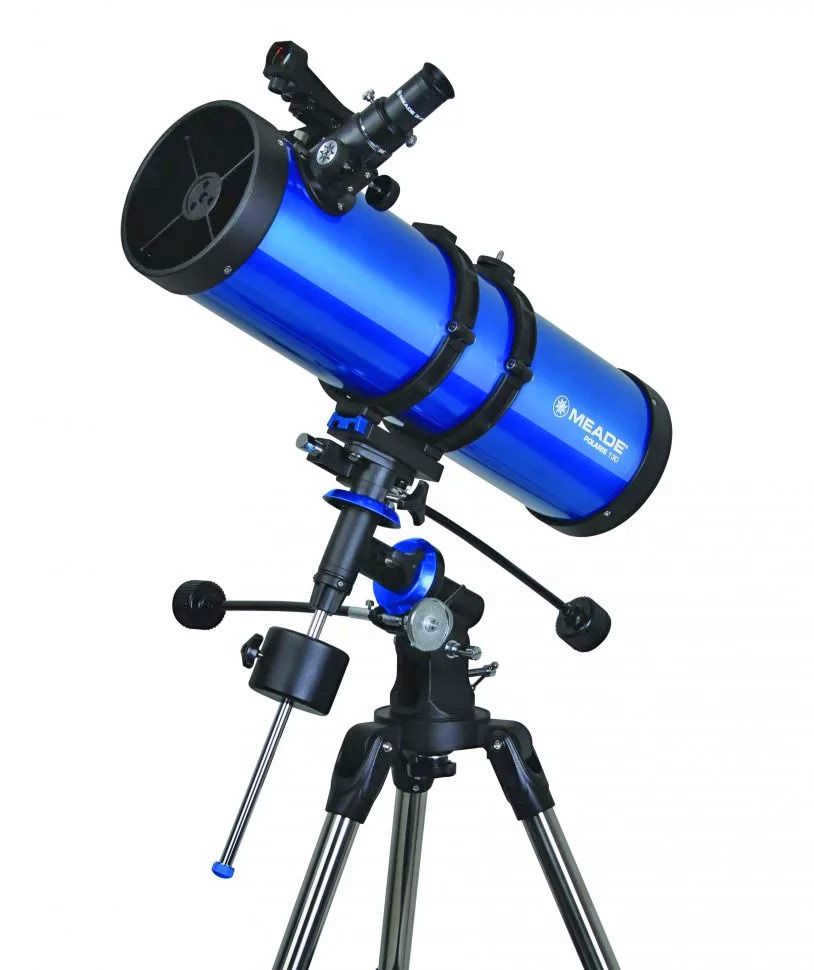

The main benefit of reflectors is their affordability. They are significantly cheaper than other types of telescopes of the same size. Moreover, you can make the necessary mirror for the lens of a reflector yourself, or if needed, simply purchase one. Assembling the tube for such a telescope at home is also not a challenging task.
Most amateur telescopes with large collecting surfaces (objective lens diameters over 200 mm) are reflectors. Refractors with a 75 mm objective lens are similarly priced to reflectors commonly used for general observing, which have a minimum objective lens diameter of about 150 mm. While a reflector has a larger collecting surface and allows for observation of fainter objects, it is not as compact as a refractor.
Intermediate in performance between binoculars and conventional reflectors are smaller reflectors with small focal ratios. These smaller reflectors are also quite compact.
However, there are also drawbacks to using reflectors. One major disadvantage is the need to regularly renew the reflective coatings and adjust the optical elements. If the reflector tube is not sealed with expensive optical glass, each mirror of the telescope must be covered to prevent dust from getting inside.
Another issue with the Newton system telescope is that the eyepiece can be in an inconvenient position during observations. To address this, the telescope tube should be able to rotate.
Unfortunately, rotating the telescope tube can cause other problems. The warm air from the observer can flow towards the optical elements, leading to increased dew buildup. It is important to wear insulating clothing while observing to minimize this issue. Additionally, designing the observatory properly is crucial in mitigating these challenges.
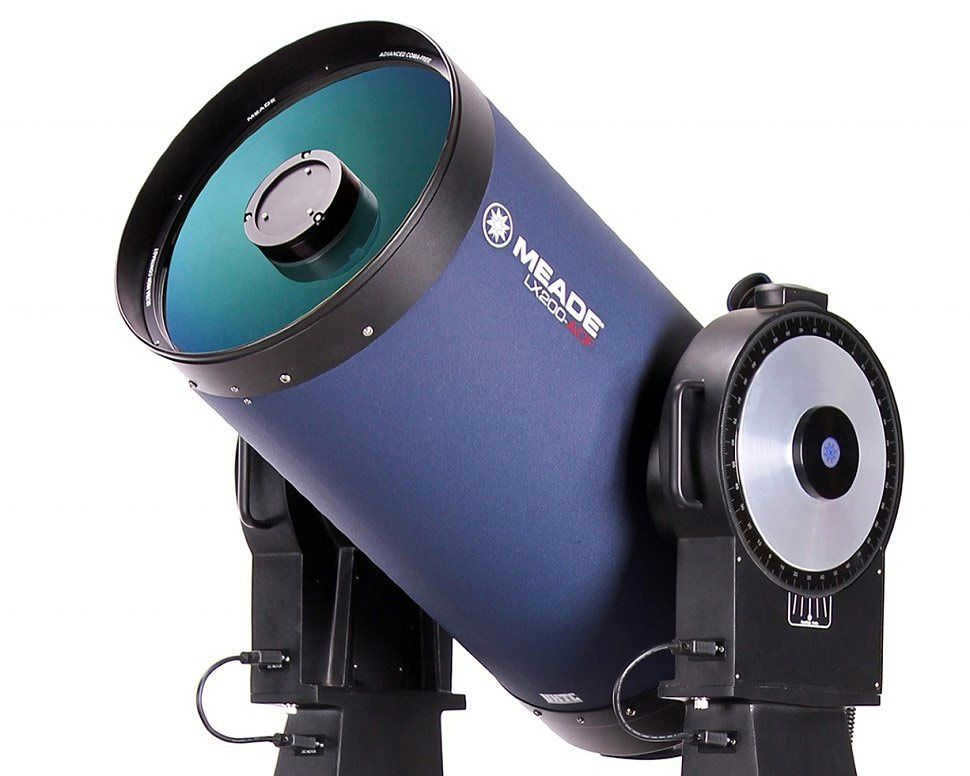
Mirror-lens telescopes, also known as catadioptric telescopes, are a popular choice among astronomers. The two most commonly used catadioptric systems are the Maksutov and Schmidt-Kassegren systems.
The Advantages of Catadioptric Telescopes
One of the main advantages of catadioptric telescopes is their portability and convenience. They are often used in conjunction with tracking devices to observe the complex motion of celestial bodies. However, it’s important to note that these telescopes tend to be more expensive compared to refractors and reflectors of the same size.
Another notable feature of catadioptric telescopes is their large focal ratios, typically ranging from f/10 to f/15. This makes them suitable for a wide range of tasks, similar to refractors and reflectors of the Cassegrain system.
How to perform a pre-purchase check of your telescope
There are various ways to independently assess the quality of a telescope’s optics, although it is important to keep in mind that no optical system is perfect. All optical systems introduce distortions in the images they produce, which are known as aberrations.
When constructing a telescope, efforts should be made to minimize these aberrations. The specific criteria for acceptable aberrations vary depending on the type of research the telescope will be used for. For instance, when studying planets, double stars, and capturing images of celestial objects, stricter standards for acceptable aberrations are applied compared to observations of variable stars.
Binoculars, refractors, and certain other types of telescopes may exhibit chromatic aberration, which manifests as a coloration of celestial bodies in the image. This aberration is particularly noticeable at clear boundaries between light and dark areas, such as the edges of the Moon or Venus. Reflector telescopes, on the other hand, do not suffer from this type of aberration.
To determine the presence of distortion in the image, one can observe a straight line or a rectangular brick pattern on a house wall.
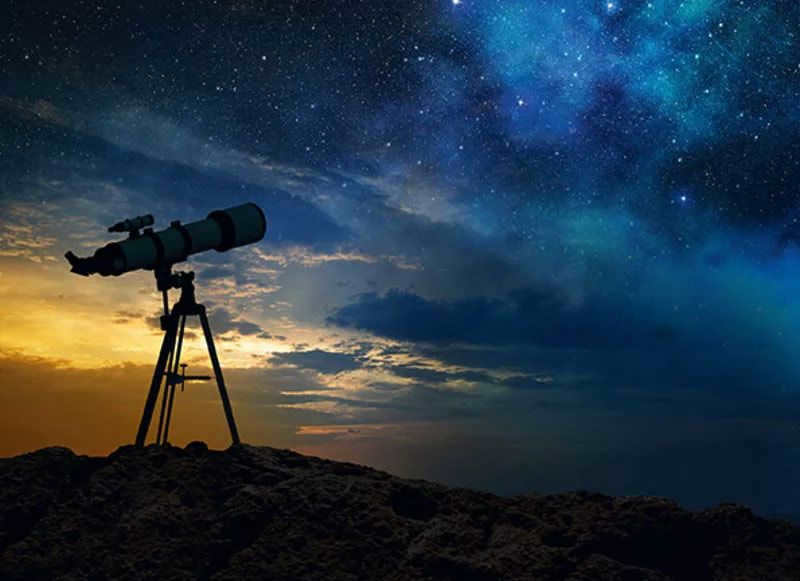

When using a high-quality telescope, the star’s image will be perfectly focused and will take the form of a circular diffraction disk. These images should maintain their circular shape both in focus and out of focus. If the images appear elongated, it may indicate the presence of astigmatism or distortion in the telescope’s optical components, which could be a result of incorrect mounting.
Field curvature is a characteristic that can be observed when the star image becomes defocused as it moves from the center to the edge of the telescope’s field of view. This phenomenon is present in most telescopes, but it primarily affects photographic observations. Another type of aberration, known as coma, is characterized by the stretching of the star’s image at the edge of the field of view, resembling the shape of a comet. Coma is also found in most telescopes, with reflectors being more susceptible to this aberration compared to refractors.
When inspecting the mechanical components and mounting of telescopes, the focus is mostly on general aspects. To ensure optimal performance, both the telescope tube itself and the telescope mount need to be rigid. This can be achieved by securely mounting the telescope axes, with each axis being supported by two well-spaced supports.

Have you made the decision to present a telescope to a friend or a child? What a fantastic choice! Exploring the wonders of the universe and studying the celestial sky has a positive impact on one’s character and understanding of the world.
By appreciating the beauty and grandeur of the cosmos, we can learn to live in harmony with nature. Perhaps you are considering purchasing a powerful instrument for yourself and delving into astrophotography?
The modern market offers a wide and diverse range of telescopes that are accessible to almost everyone. You have the option to purchase an affordable beginner’s telescope or invest in a larger instrument with professional-grade features used by astronomers today. Before exploring the array of telescopes available for your purchase, it’s important to decide on the type of optical system, mount (the support structure for the telescope), and the manufacturer that suits your needs.

There are several popular types of telescope optical systems available for amateur use. These include refractors, reflectors, Kassegren, Maksutova-Kassegren, and Schmidt-Kassegren. Each optical system has its own unique set of lenses and mirrors. It is important to consider the optical system when choosing a telescope, although personal preference can also play a role. Here, we will discuss the key features of each optical system.
Refractor telescopes
The objective lens of refractor telescopes is located at the front of the tube. These telescopes have a longer length compared to other systems. The cost of a telescope increases disproportionately with the diameter of the lens, as the manufacturing process for a high-quality large lens is more complex than that of mirrors used in Newton systems, for example. There is a type of refractor telescope called an “apochromat” that has a shorter tube length (focal length) but comes at a higher price. Such telescopes are commonly used for astrophotography.
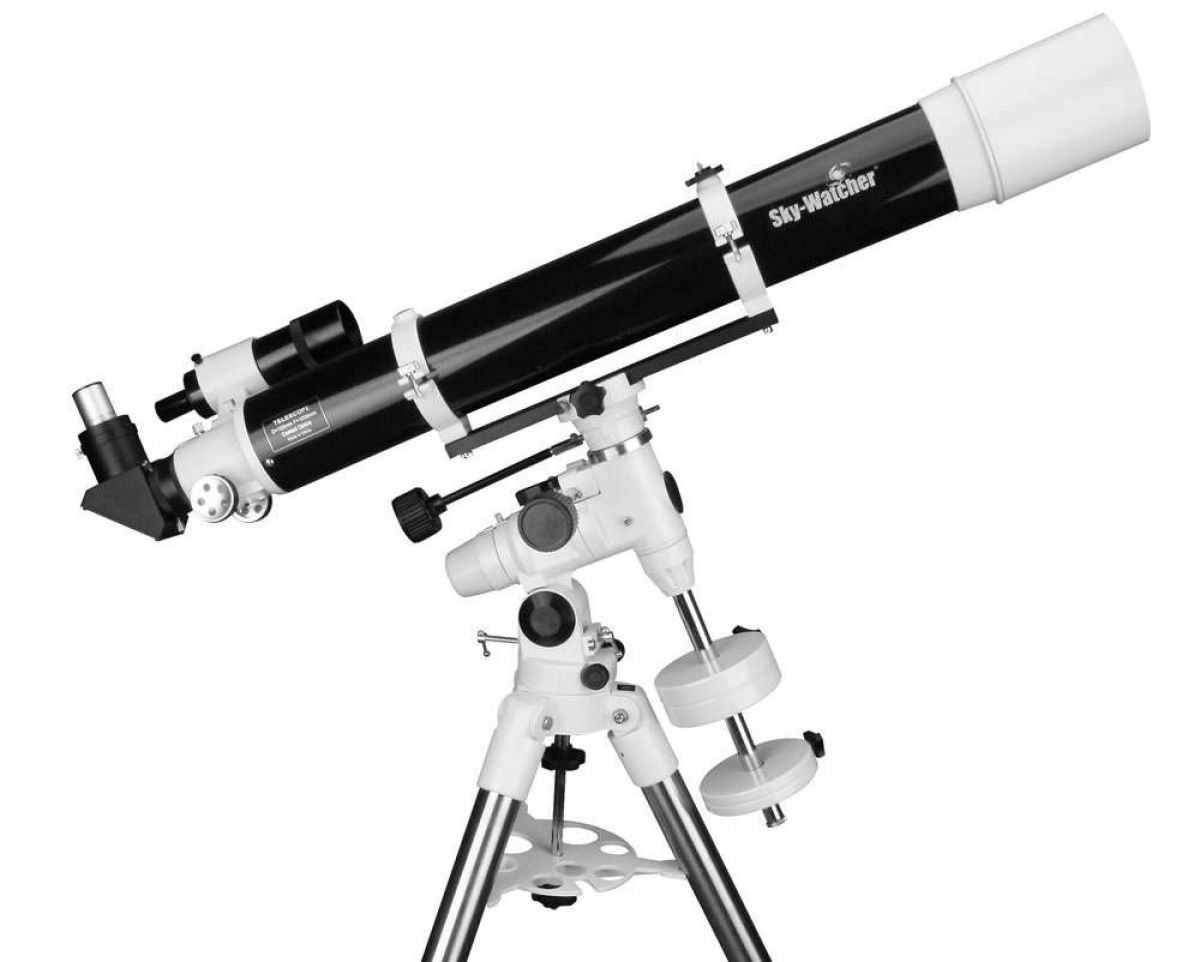
Observing with refractor system telescopes is convenient in open areas but not ideal for balconies or open windows. It is not recommended to observe from an open window due to temperature differences between the room and outside, which can cause turbulent air currents and distort the image. Observing through closed windows is generally impossible and not advised.
Overall, refractor systems on azimuthal mounts are a great choice for children as they are relatively easy to operate. Unlike mirror telescopes, refractors are less sensitive to temperature conditions.
Reflector telescopes
The optical system of reflector telescopes, such as the Newtonian system, is fundamentally different from that of refractor telescopes. Instead of using a lens, reflectors utilize a concave mirror located at the back of the tube. The process of manufacturing mirrors is simpler compared to lenses, resulting in reflector telescopes being significantly more affordable when they have the same lens diameter as a refractor. Reflectors are commonly mounted on equatorial mounts, which may be challenging for children but offer enhanced functionality and convenience for extended observations compared to azimuthal mounts. Alternatively, these telescopes can be mounted on Dobsonian mounts, which are inexpensive but not ideal for precise observations and navigation.


The mirrors in a telescope have a delicate reflective coating that requires careful handling. The most harmful for the mirrors are sudden changes in temperature. It is recommended to cover the telescope after use to prevent condensation from forming on the mirror and other parts of the tube and mount. Nowadays, there is a wide range of reflector telescopes available, ranging from 80-100mm to 150mm and even 250mm in lens diameter.
If you value the brightness of your telescope and want to observe faint and distant objects while saving money, then this type of telescope is the right choice for you. However, this does not mean that this system is inferior to others. It is impossible to make a general rule here! Each optical system has its own unique characteristics, important advantages, and disadvantages.
Maksutov-Kassegren and Schmidt-Kassegren are optical systems that have been developed as alternatives to traditional telescopes since the time when Galileo Galilei first invented the telescope and brought it into common use. One of the main challenges with traditional refractor telescopes is the distortion of images caused by chromatic aberration, which is a result of the lens used in these systems. Over the years, various methods have been employed to address this issue. Mirror systems, on the other hand, do not suffer from chromatic aberration but can have other drawbacks such as spherical aberration and coma.
Opticians have come up with corrective lenses and plates that can be installed in the front of the tube of mirror systems to correct these distortions. These systems offer high-quality, clear images and are also compact and easily transportable.
Undoubtedly, anyone who has ever had the privilege of grasping a telescope or binoculars has likely observed the inherent desire to rest their hands on something solid. This inclination arises from the unavoidable fact that even the slightest tremor of the hands can be transmitted to the instrument, causing the image to tremble and impeding the ability to study the intricate details of distant objects. The vital component responsible for the mechanical movement and support of the telescope is known as a mount. Numerous mount systems exist, yet within the realm of amateur telescopes, three primary types prevail: azimuthal, equatorial, and the renowned Dobsonian system. Each mount type offers distinct advantages and disadvantages, which must be carefully considered.
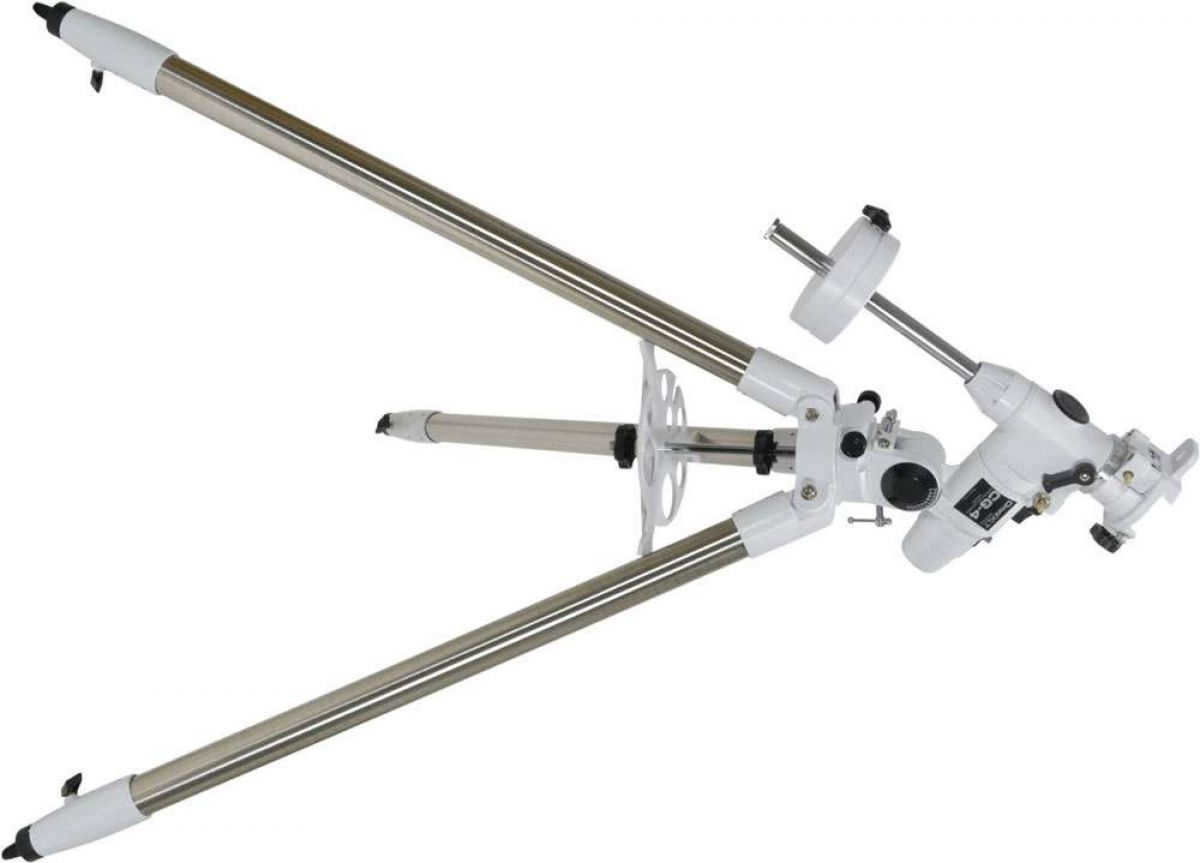
Azimuthal, for instance, is a straightforward and convenient option for refractor telescopes, making it ideal for children.
Equatorial – adjustable based on the latitude of the observation site and enables precise pointing of the telescope towards celestial objects using coordinates, making it indispensable for accurate astronomical observations, comet searches, and spotting faint objects in the sky. This system is perfect for astrophotography, capturing images of the starry sky and celestial objects.
The Dobson system, on the other hand, is simple and straightforward but not suitable for locating faint objects. This system is typically utilized for larger reflector telescopes, reducing the overall cost of the “telescope plus mount” set and providing a powerful telescope.
Accessories for Your Telescope
It’s important to remember that you will probably need to purchase some accessories for your telescope, either right away or at a later time. There are various accessories available, such as eyepieces, Barlow lenses (which provide high magnification), filters, motors, prisms, and more.
Telescope magnification
One question that is often asked is, “What is the highest possible magnification of this particular telescope?”
For example, if you want a telescope with a larger lens diameter, you can find one that suits your needs. Additionally, you can purchase eyepieces to adjust the magnification parameter.
Choose a telescope that meets your goals
If you’re looking for your first telescope, consider a 70-90 mm refractor, 110-130 mm Newton reflector, or 90-100 mm Maksutov-Kassegren.
When choosing a telescope for a child, keep in mind that they are generally less demanding. Inexpensive 70-80 mm refractors and reflectors are a good option for their first stargazing experiences.
If you’re interested in planetary observations, it’s best to go for a 120-150 mm refractor. These telescopes don’t have center shielding, allowing for bright and contrasting images.
Observing Faint Celestial Objects: The most suitable instruments for observing dim galaxies, nebulae, and clusters are 200-250 mm reflectors mounted on equatorial or Dobson mounts.
All-Purpose Telescope: Instruments in this category are designed for individuals who have not yet determined their preferred objects of observation. For these individuals, a 100-120mm refractor, 130-150mm reflector, or 127mm Maxutov-Cassegrain may be the optimal choice.
Portable Telescope: Telescopes based on the Maksutov-Cassegrain system are lightweight and compact enough to be easily transported to the observation site. Additionally, a compact refractor can serve as a “camping” telescope.
Astrophotography Telescope: To capture long-exposure images of celestial objects, a stable and smoothly-operating equatorial mount with electric drives on both axes is necessary.

